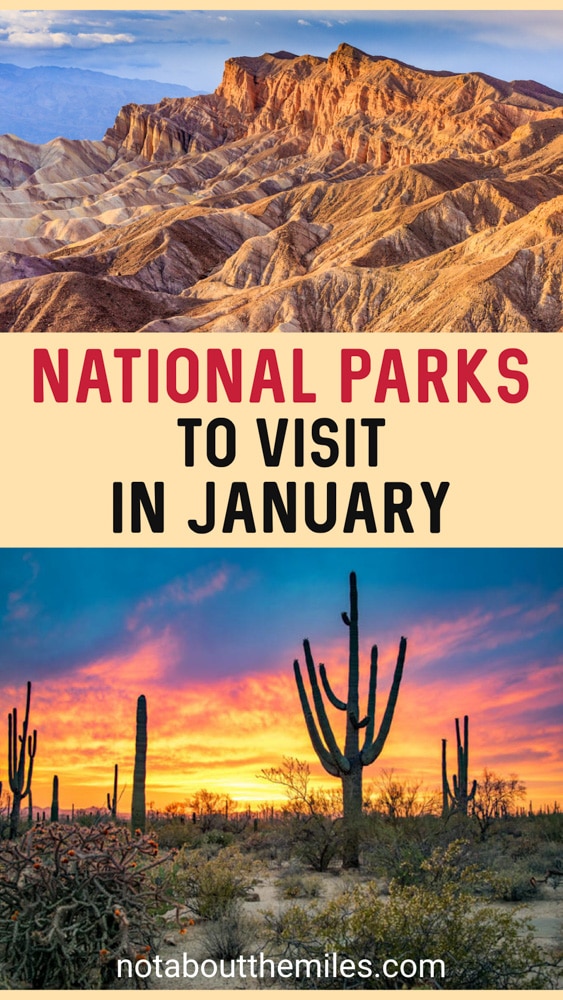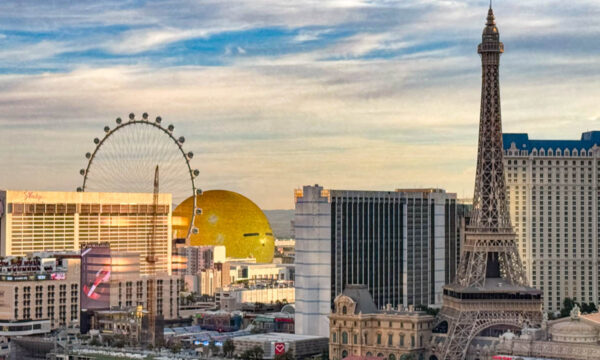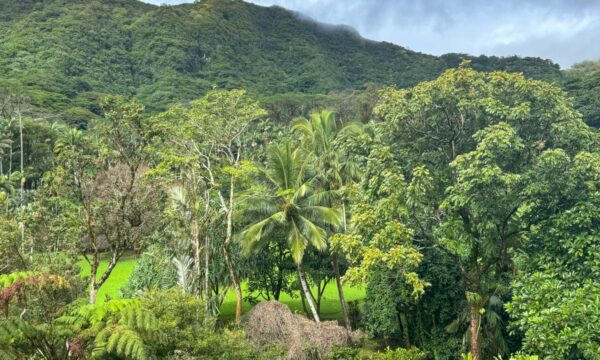Planning a trip to a US national park at the start of the year? To help you choose which park(s) to visit, we have an exciting round-up of the best national parks to visit in January.
January is, of course, one of the ideal months to visit national parks in the warmer parts of the country if you are trying to escape the clutches of winter at home.
It is also a blissfully less busy time in some of the most popular parks in the USA (even if the weather isn’t ideal), making them great destinations for January.
Think about hiking to the iconic Delicate Arch in Arches National Park without lots of other hikers on the trail, or taking in the views along the South Rim of the Grand Canyon in relative solitude: these and other such experiences are well worth the cooler temperatures on a January visit!
From beachy national parks like Virgin Islands National Park to desert parks like Death Valley and the volcanic craters of Haleakala and Hawaii Volcanoes National Parks, there are some stunningly gorgeous US national parks you can visit in January.
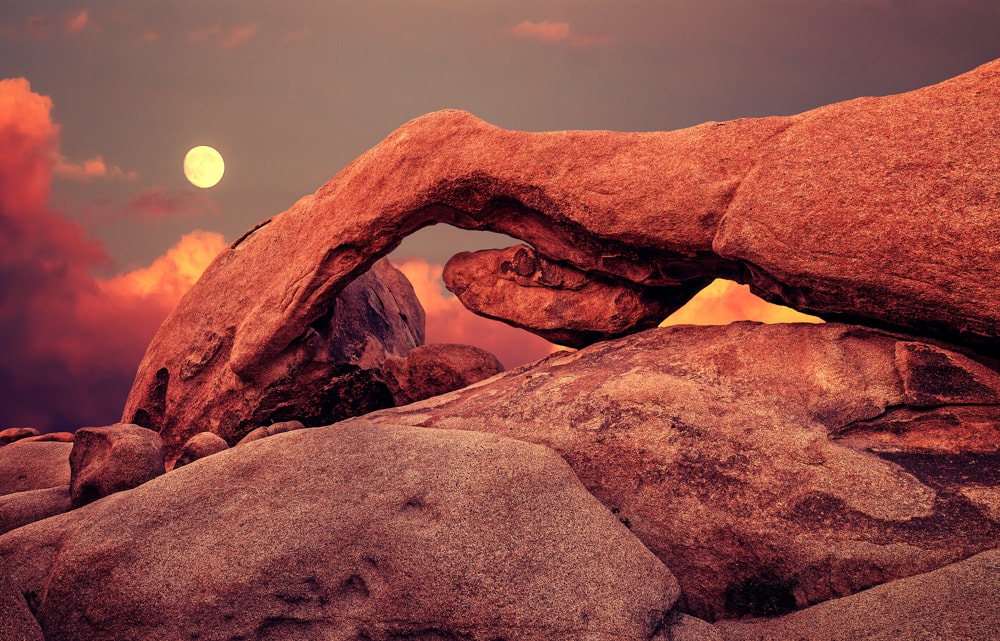
Some links on this page may be affiliate links. If you click an affiliate link and make a purchase, we may receive a small commission, at no extra cost to you. For more details, refer to our disclosure.
Most of the parks in our round-up are “warm” weather parks, but we could not help including just a couple of very popular cold weather parks that look spectacular in the winter while being relatively crowd-free. So if full-force winter doesn’t intimidate you, you’ll definitely want to consider these two parks!
And now, let’s get started discovering the best US national parks to visit in January!
1. Death Valley National Park
Location: Southern California
One of our favorite US national parks to visit in January, Death Valley National Park offers majestic desert landscapes, with excellent sightseeing, low elevation hiking, and stargazing.
While winter is high season for Death Valley National Park, the park is so vast that it doesn’t often feel crowded. And January sees fewer visitors than either December or February.
Death Valley is close enough that it’s one of the easiest day trips from Vegas, but we suggest at least two days in the park, because there’s a lot to see and do.
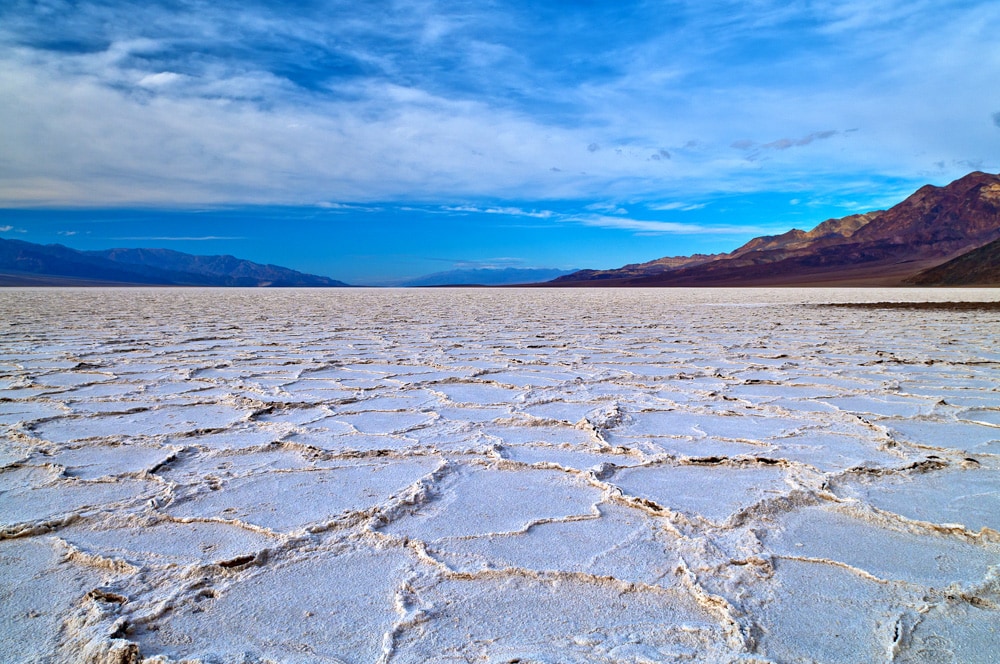
Death Valley weather in January: You’ll find relatively mild temperatures at lower elevations in Death Valley National Park in January, and usually no rain.
Average daytime highs in the lower elevations in the park tend to be in the high 60s Fahrenheit, with nighttime lows at around 40 degrees Fahrenheit.
At higher elevations, temperatures are much cooler: figure a 3-degree drop for every 1,000 feet in elevation gain.
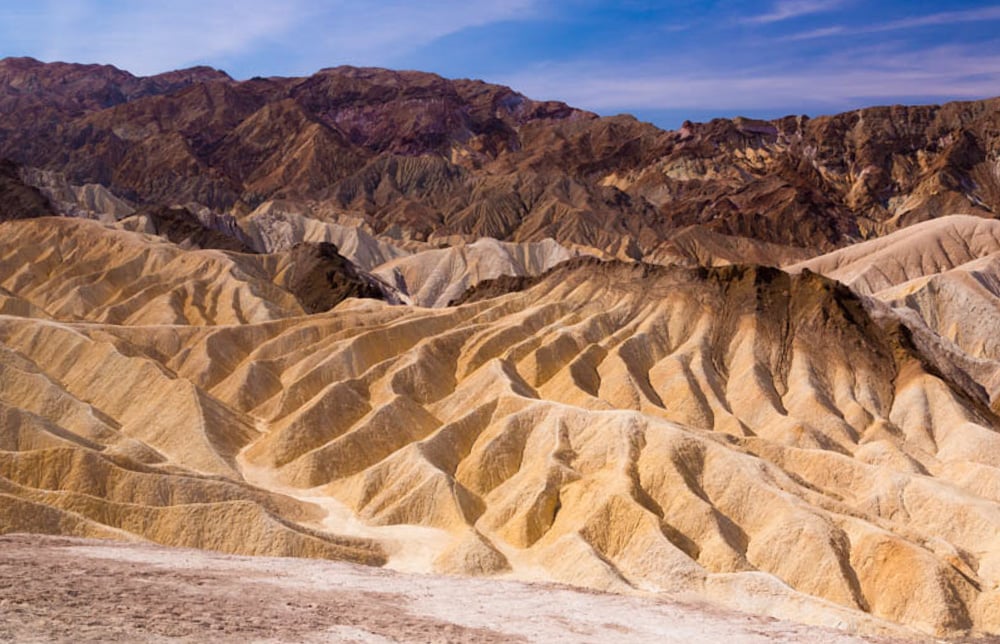
What to do in Death Valley National Park: Take advantage of the mild daytime temperatures and hike lower elevation trails in the park!
Death Valley hikes vary in length and difficulty level, but Mosaic Canyon, Golden Canyon and Gower Gulch, and the Badlands at Zabriskie Point are all worthwhile options.
Scenic drives in the park bring you to must-see landmarks like Zabriskie Point (sunrise is a stunning time to visit!), Dante’s View (the highest point to which you can drive), and the Badwater Salt Flat, which contains the lowest point in North America.
Artist’s Drive is a must-drive loop off Badwater Road. Stop at the famous Artist’s Palette viewpoint with its multi-hued mineral deposits.
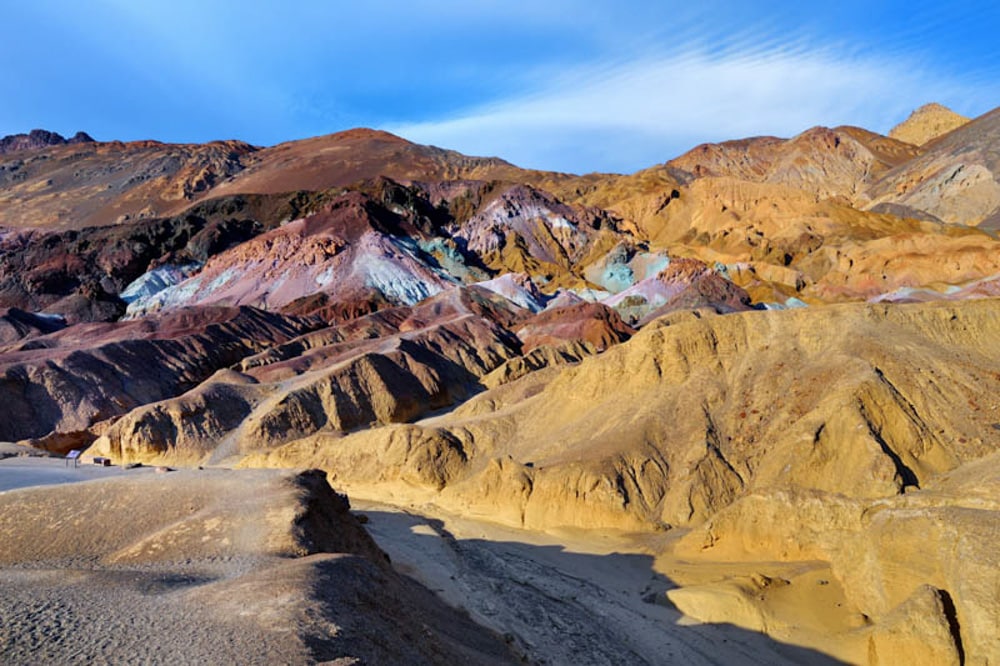
Visit the Mesquite Flat Sand Dunes at sunrise or sunset to enjoy the play of light and shadow on the dunes.
Death Valley National Park is a dark sky park. Since the sun sets early in January, it’s a great time to enjoy stargazing, especially if you are in the park on a clear moonless night.
On a longer stay, you can visit lesser-visited parts of the park as well: hike the rim of the spectacular Ubehebe Crater, hike to Darwin Falls, or, with the proper vehicle, see the unique moving rocks at Racetrack Playa!
Where to Stay
The Ranch at Death Valley is located inside Death Valley National Park, right by the Visitor Center. Rooms are comfortably furnished, and there is an onsite restaurant.
Book a stay here!
For a more upscale option, consider The Inn at Death Valley, where you can either stay at the main inn, or opt for a standalone casita.
Book a stay here!
Suggested by us
Planning to visit more than one national park in the next 12 months? Consider buying the America the Beautiful National Parks Pass!
Valid at over 2,000 federal recreation sites all across the USA, the pass covers entrance, standard amenity fees, and day use fees for a driver and passengers in a personal vehicle at areas that charge per vehicle, and for up to four adults at sites that charge per person. Children ages 15 or under are free.
The pass is valid for 12 months from the month of purchase.
2. Haleakala National Park
Location: Maui, Hawaii
Haleakalā National Park, located on the island of Maui, is known for its eponymous volcano, which holds the title of the largest dormant volcano on the planet. It’s one of the top places to visit in Hawaii.
But Haleakala offers so much more, playing home to several endangered species and offering a diverse array of landscapes, from colorful volcanic sand dunes to beaches and waterfalls.
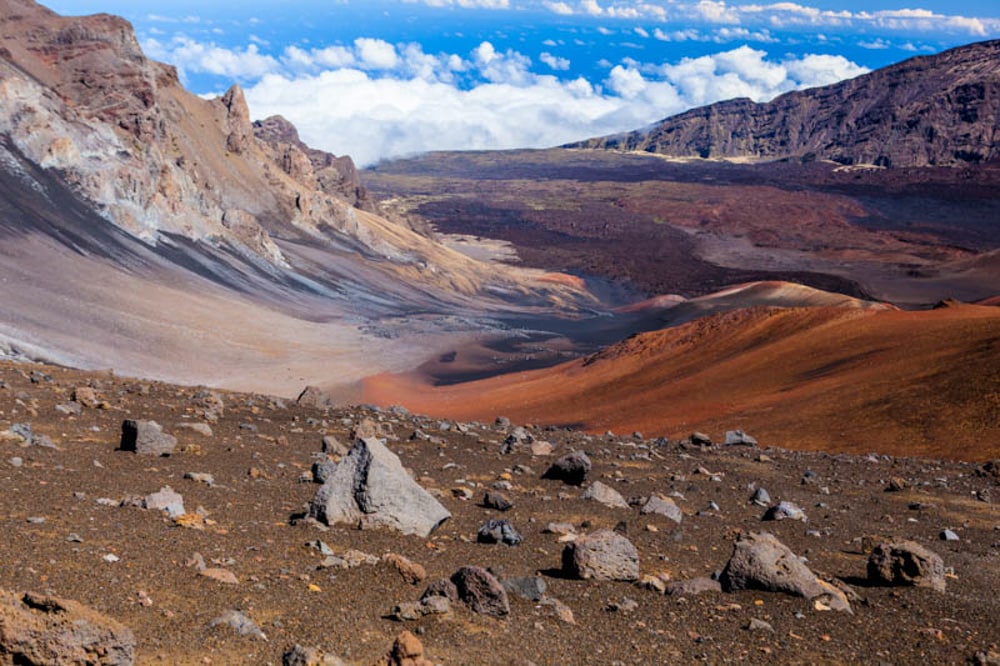
Haleakala weather in January: Haleakala’s Summit District can be quite cold in January, so a warm jacket, beanie, and gloves are a must.
Expect average daytime highs around 40 degrees Fahrenheit and lows below freezing at the summit of Haleakala.
In the Kipahulu district, average daytime highs are in the low to mid 70s, and lows in the high 60s and low 70s.
Kipahulu is on the windward side of Maui, so rain showers are very likely. Bring a rain jacket, just in case!
What to do in Haleakala National Park: One of the best things to do in Haleakala National Park is watch the sunrise above the volcano’s crater. Watching the sunrise at Haleakala is one of the best things to do in Hawaii.
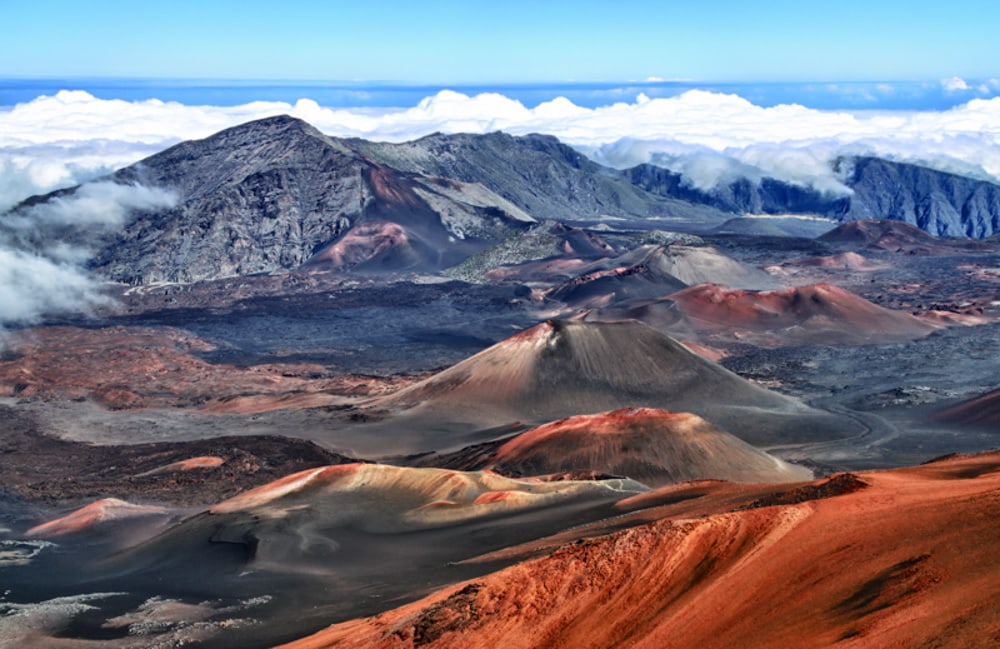
Thanks to the limited light pollution, dynamic weather, and high elevation, the sunrise views here are spectacular.
You’ll need to snag a highly coveted permit to enter the park for sunrise. Dress warm. It gets quite literally freezing cold at the volcano’s 10,023 feet of elevation!
After sunrise, hit the Sliding Sands Trail, where you’ll hike down below the rim of the volcano into its crater.
Along the way, you’ll see stunning volcanic rock formations, vibrant sand dunes, and otherworldly-looking plants. It’s certainly one of the best hikes on Maui!
For something totally different, drive the beloved Road to Hana. It’s one of the top things to do in Maui, and you’ll get to visit the Kipahulu district of Haleakala National Park.
A few miles past the tiny town of Hana is where you’ll find the park’s Kīpahulu District, home to the ʻOheʻo Gulch Trail and its many pools and waterfalls.
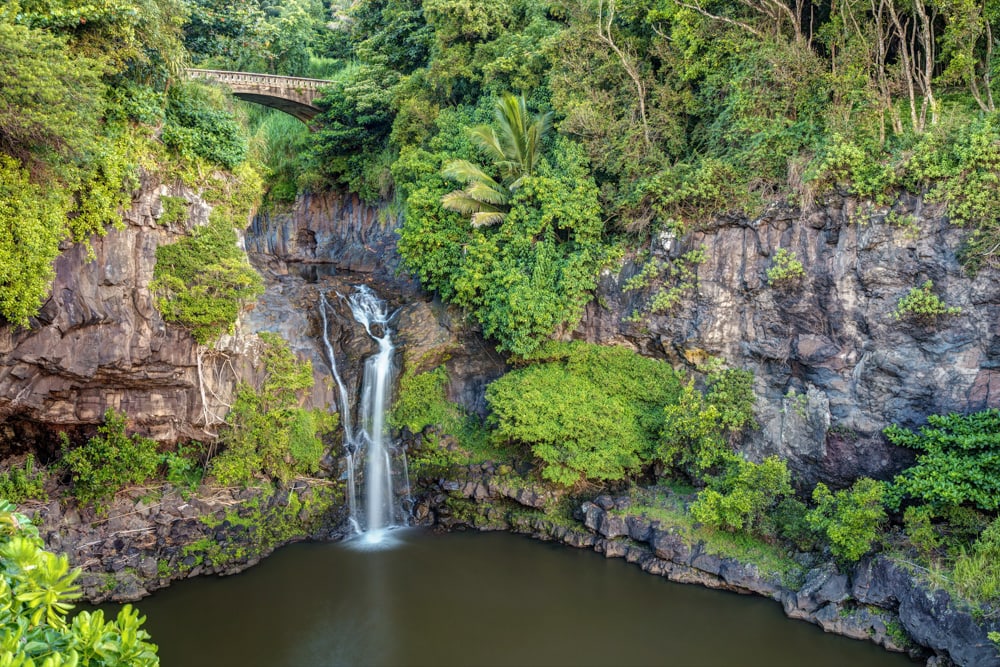
Where to Stay
If you’re looking for a home base from which to visit Haleakala, consider booking a stay in the funky surf town of Paia.
The Paia Inn is conveniently located between both sections of the park and has plenty of stellar amenities, like beach access and an upscale onsite restaurant.
Book a stay here!
Suggested by Jessica of Uprooted Traveler
Planning to rent a vehicle for your January national park trip? We have found great deals on Discover Cars. They compare rates and rental requirements across many car rental agencies, both brands and budget, and get you the best deal.
3. Virgin Islands National Park
Location: Saint John, US Virgin Islands
One of the most beautiful warm locations you can visit in the USA in January, the island of St. John is home to the gorgeous Virgin Islands National Park.
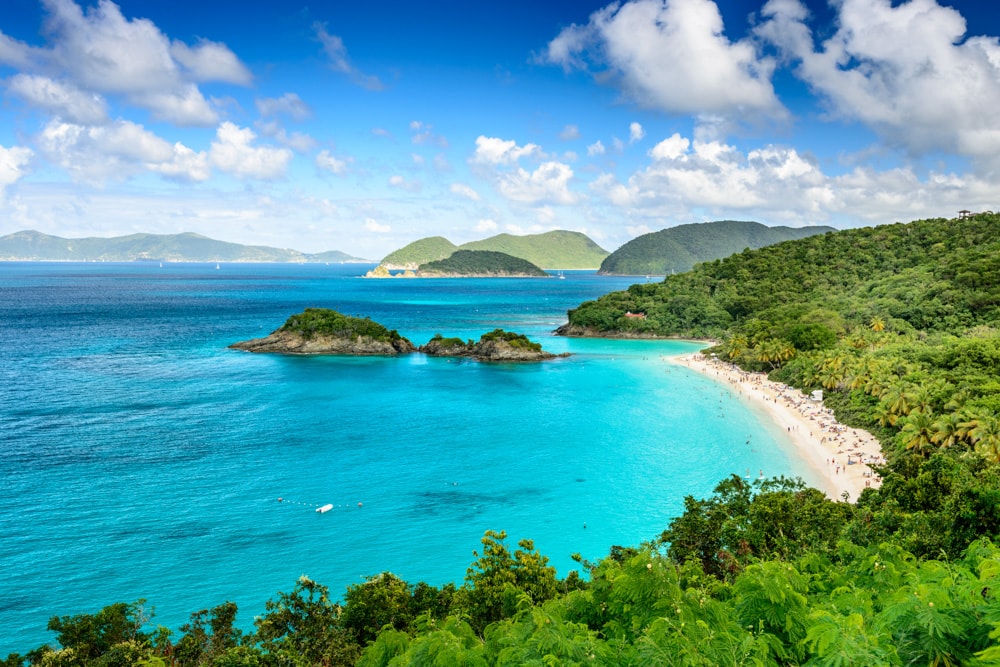
With pristine sandy beaches, and a slew of activities including swimming, snorkeling, boating, and hiking, you will love visiting Virgin Islands National Park.
January falls within high season at the park, so expect lots of other visitors!
Virgin Islands weather in January: Average daytime highs in January at Virgin Islands National Park are around 80 degrees Fahrenheit, with nighttime lows in the high 60s.
January is typically a dry month, so expect lots of sunshine. Water temperature is around 80 degrees, perfect for swimming and other water activities.
What to do in Virgin Islands National Park: Lazing on a beach in the depths of winter is one of the most fun aspects of visiting Virgin islands National Park in January.
With warm waters rich in marine life and soft white sands perfect for lazing, Virgin Island National Park’s beaches will have you wanting to never leave.

Trunk Bay, known as one of the most beautiful beaches in the world, can get crowded, so arrive early or late for a more relaxed time. Cinnamon Bay and Hawksnest Beach are other easy-to-access beaches in the park.
Want to hike? There are more than 20 trails in the park. Consider the Caneel Hill Trail, four miles round trip, for panoramic views of the bays and surrounding islands. It’s an especially great place to enjoy sunset!
The easy 0.5-mile nature loop at Cinnamon Bay winds through the historic ruins of a sugar plantation. For a strenuous hike that goes past historic sites to hilltops that offer gorgeous views, do the Johnny Horn Trail.
Rent a kayak and get out onto the water, or go snorkeling. There are many snorkeling spots in the park, and if you want to look for sea turtles, go to Maho Bay! Francis Bay is a great snorkeling spot, with its calmer waters, and you’ll find coral, fish, and other marine life a-plenty.
If you enjoy local history, tour the Annaberg Plantation, where you can see the remains of the windmill and animal mill that were used to extract juice from sugarcane. You can also see he sugar factory and parts of the rum still.
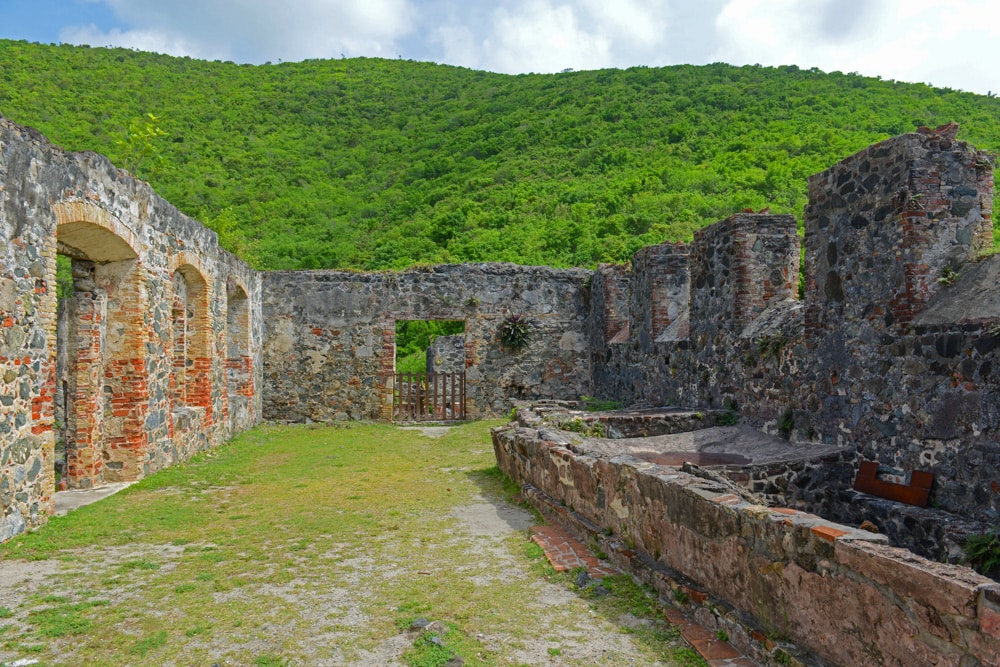
Where to Stay
Coconut Coast Villas are located just under 3 miles from Virgin Islands National Park, and you’ll find studios and larger units here. The property features a year-round outdoor pool. Units are air-conditioned and have wifi.
Book a stay here!
Suggested by us
4. Arches National Park
Location: Utah
Arches National Park is one of the “Mighty 5” national parks in Southern Utah. One of the most popular national parks in the USA, Arches is known for its stunning rock formations and natural arches, many of which are named.
Visit in January for lower crowds and a much more relaxed experience in the park. You don’t need a timed entry, as you do in the summer!
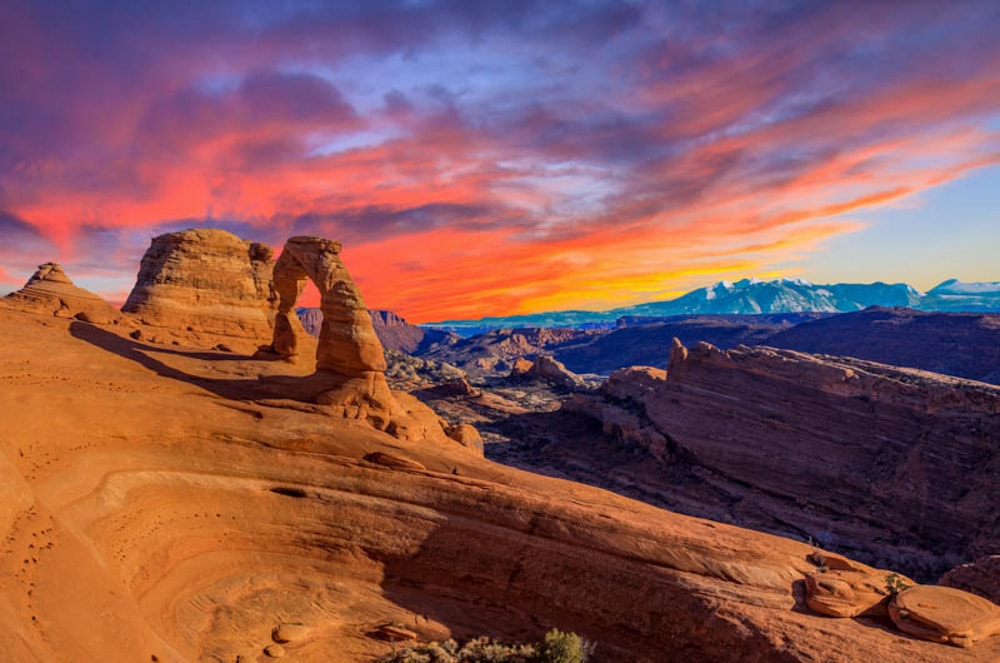
Arches weather in January: Arches is one of the colder parks on our list, with average daytime highs in the mid 40s Fahrenheit. Lows can drop into the low 20s.
The park can also experience light snowfall in the winter. The snow looks stunning in contrast to the red rocks and arches!
What to do in Arches National Park: Drive the scenic road through the park: it takes you past many of the park’s highlights and overlooks.
Take in beautiful views of the sandstone formations from the La Sal Mountains Viewpoint. At Courthouse Towers, enjoy views of The Three Gossips, The Tower of Babel, and The Organ.
Further up the road, stop to snap photos of the striking Balanced Rock, and take in the magnificent view at the Fiery Furnace Viewpoint.
If you enjoy hiking, there are some awesome hiking trails in Arches National Park.
Delicate Arch is the most popular hike in the park. At 3 miles round trip, it is a moderately challenging hike over slickrock and sandy sections.
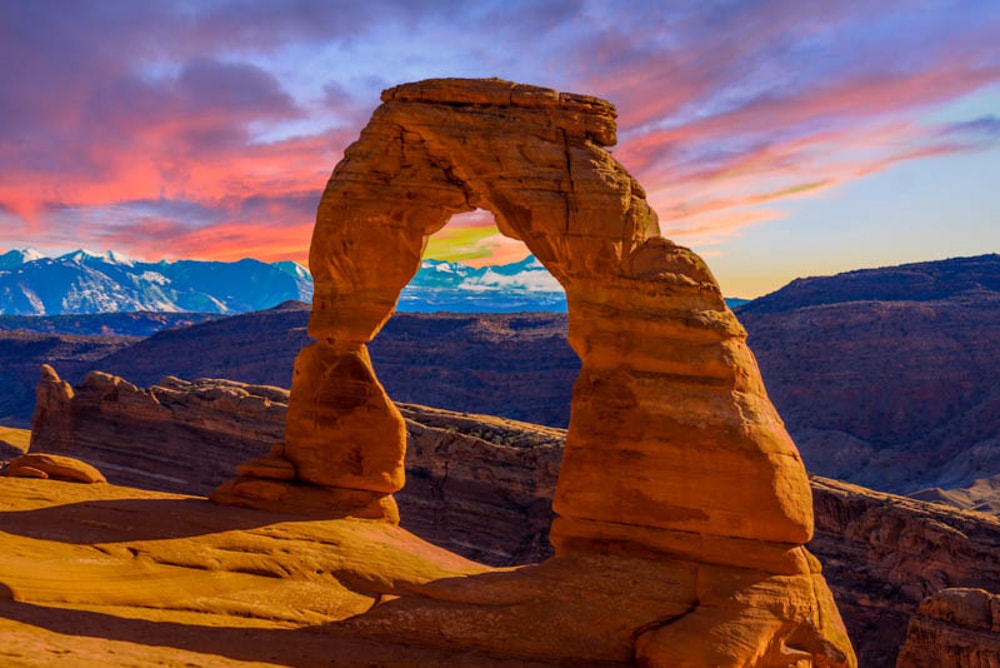
The hike gets you right up to the much-photographed 52-foot-tall Delicate Arch, the largest freestanding arch in the park. Sunset is considered the optimal time to photograph Delicate Arch.
At the end of the scenic park road is the Devils Garden, where the full hike, if you do all the spurs and arches, is 7.8 miles, but you can hike a section of it and see one or more beautiful arches.
The Windows Loop is a relatively shorter and easier hike in Arches that takes you to the Windows and Turret Arch. The scenery is beautiful.
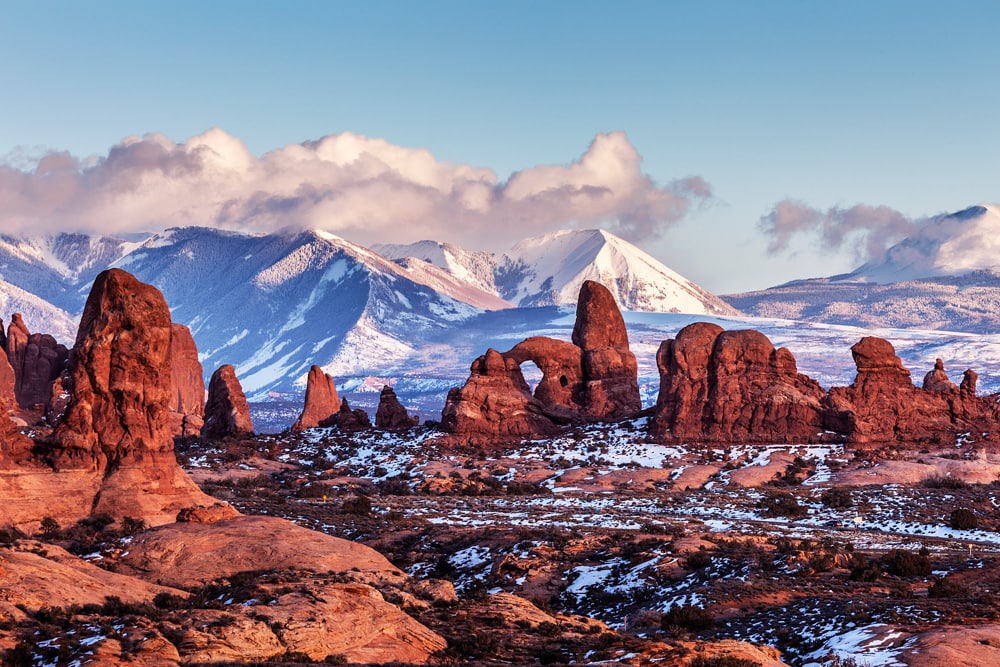
Good to know: If you have a few days in the area, consider adding in one day in nearby Canyonlands National Park! The park’s Island in the Sky district is easy to visit, but you can also take a 4X4 tour of the Needles district!
Dead Horse Point State Park, along the way to Canyonlands, is a stunning park well worth a stop, as is Goblin Valley State Park, about 1.5 hours from Arches NP.
Where to Stay
The Best Western Plus Canyonlands Inn is located close to shopping and dining in downtown Moab. Rooms are spacious and furnished comfortably.
Book a stay here!
Suggested by Janae of Adventures with TuckNae
5. Hawaii Volcanoes National Park
Location: Big Island, Hawaii
One of the best US National Parks to explore in January is Hawaii Volcanoes National Park. The park is home to two famous (and very active!) volcanoes: Mauna Loa and Kilaeau.
So unique are the landscapes protected by the park that it is designated a UNESCO World Heritage Site.
It’s one of the best places to visit in Hawaii!
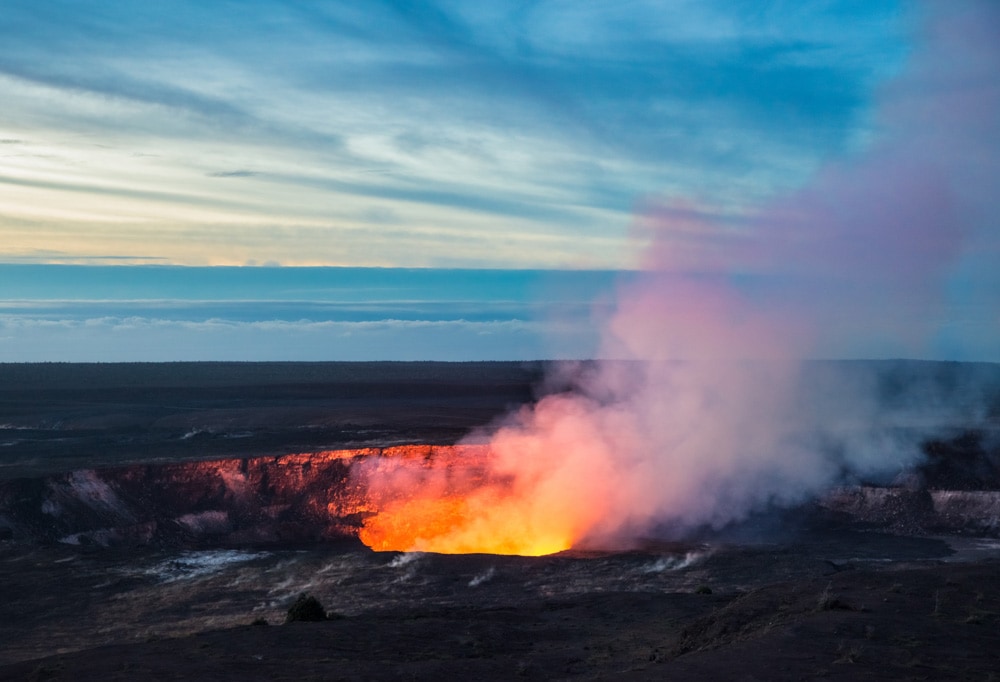
January is a great time to visit Hawaii Island because the holiday crowds have gone, leaving only snowbirds behind. The weather is still pleasant and the sunset is early, making it easier to hike to see lava.
Hawaii Volcanoes weather in January: Daytime highs at lower elevations in the park in January typically range between 68 and 71 degrees Fahrenheit, and nighttime lows between 49 and 52 degrees.
Usually, January has a 29% chance of rain, and the likelihood decreases later in the month.
Temperatures at the summits are, of course, much cooler. At the top of Mauna Loa, almost 14,000 feet above sea level, expect freezing temperatures (and snow), and dress very warm.
What to do in Hawaii Volcanoes National Park: There are tons of things to do at Hawaii Volcanoes National Park.
The most popular activity is to see the lava, but remember that this only happens if the volcanoes are active. If they are, you’ll want to stop by the Visitor Center to chat with a park ranger who will tell you the safest places to see the lava.
Usually it’s best to see lava right before sunrise or right after sunset.
Many visitors also like to go hiking in the park. The Kilauea Iki Trail is one of the top hikes: the trail takes you through a rainforest to the solid lava lake at the bottom of the crater. Be warned, the hike is steep!
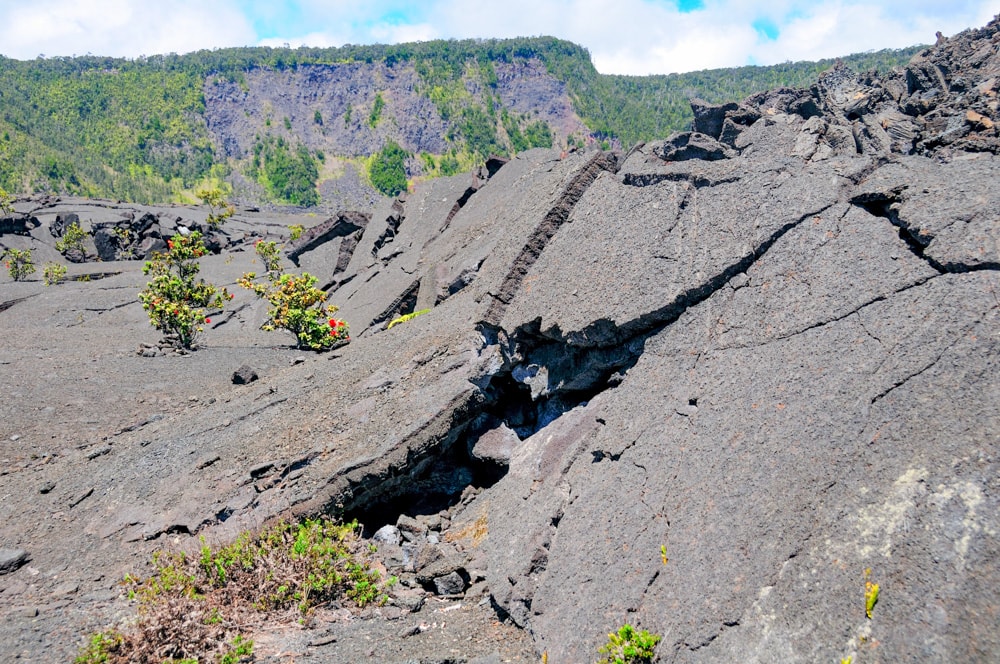
There’s also the Nahuku Lava Tube (formerly Thurston Lava Tube) that is easy for kids and adults to explore. You’ll walk through a lush rainforest before entering the centuries-old lava tube.
Don’t miss driving the Chain of Craters Road, where you can drive all the way down to the ocean. The 18.8-mile drive features many must-stop spots, from craters and sites of old lava flows to scenic overlooks.
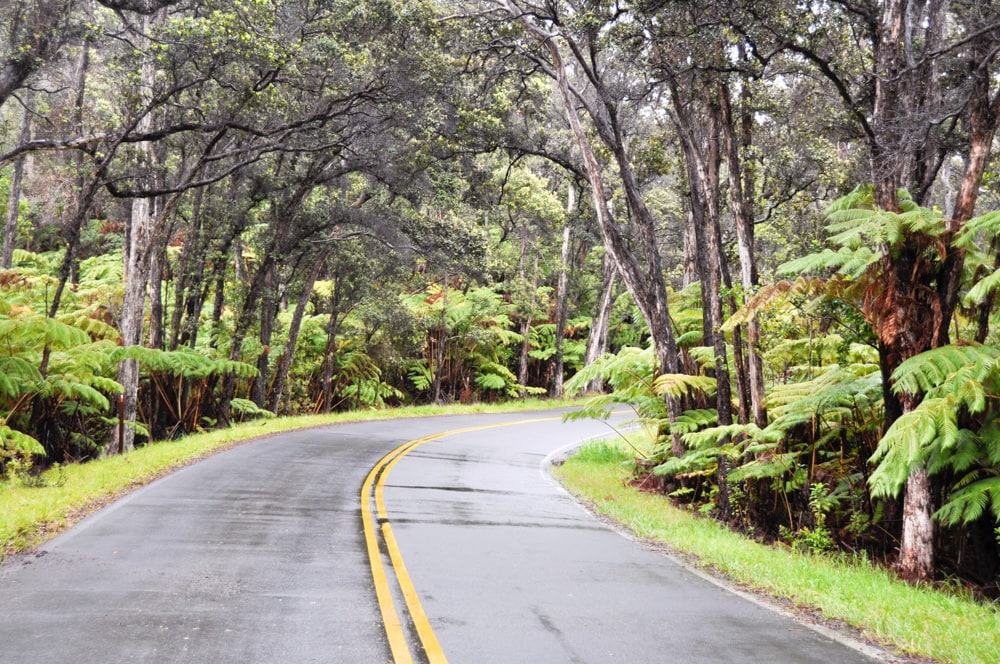
Where to Stay
For a cool place to stay, consider Volcano House, right in the park. If the volcano is active, you can see the glow from your room!
The Volcano Eco Cabin Retreat is a cozy cottage located six miles from the park entrance. The one-bedroom cottage has a kitchenette and a sun terrace. Wifi is offered, and the refrigerator is stocked with choices for making breakfast.
Book a stay here!
Recommended by Marcie from Hawaii Travel Spot
6. Joshua Tree National Park
Location: Southern California
Known for its enormous monzogranite boulder formations and fields of Joshua trees (after which the park is named), Joshua Tree National Park is a fun desert park to visit in January.
The park is one of the most popular California weekend getaways in cooler weather.
Mild daytime weather make hiking and rock climbing in the park comfortable, and January being a low travel time, you’ll find the popular trails far less crowded. Parking is a whole lot easier as is scoring a campsite inside the park (a warm sleeping bag is a must!).
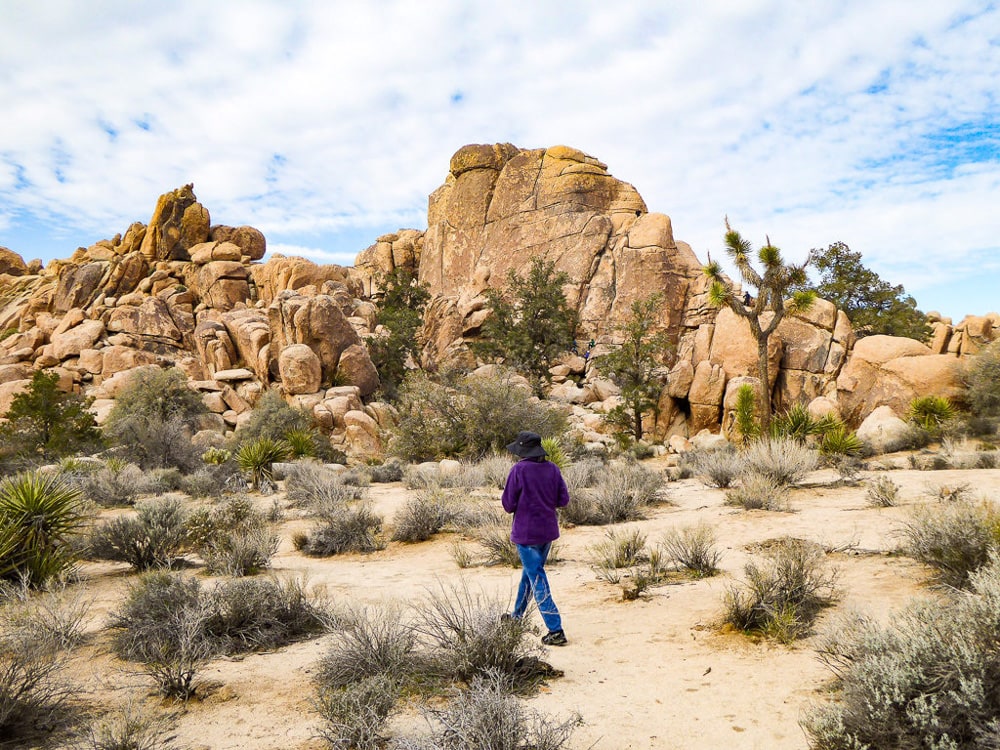
Joshua Tree weather in January: Daytime highs in Joshua Tree National Park in January tend to be in the low 60s Fahrenheit, with nighttime lows falling into the high 30s or low 40s. Bring layers, especially if you plan to stay out early or late!
While you’ll likely experience cloudy skies, precipitation is not very likely. Snow is rare, but it’s a big event when it does happen, drawing hordes of visitors to the park.
What to do in Joshua Tree National Park: Hiking and bouldering are two very popular activities in Joshua Tree National Park. There are trails for all levels of skills.
Walk the boardwalk trail at the Cholla Cactus Garden: it looks especially beautiful at sunrise. Hike the Hidden Valley Nature Trail, with its many bouldering opportunities, or the Barker Dam Trail, which leads to a reservoir built by early cattlemen in the area.
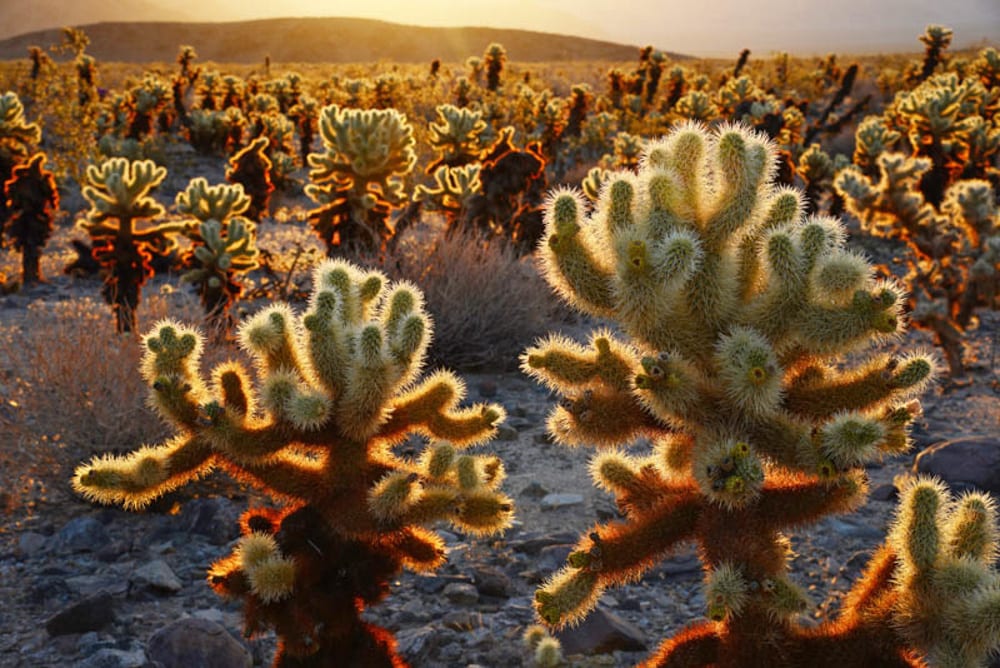
For a more challenging hike, try the trail to the beautiful Fortynine Palms Oasis, where you will find mature California fan palms to admire. Or climb to the top of Ryan Mountain for panoramas over the park.
The scenic drive through the park takes you past many of the most striking boulder formations in the park. Skull Rock, which looks just like a human skull, is a popular stop.
Hikes also lead to the remnants of mines in the area, if you want to take in some local history. Also take a guided tour of Keys Ranch, the former homestead of Bill Keys, the most prominent settler in the area.
At sunset, head to Keys View to take in panoramic views of the Coachella Valley and surrounding mountains. And after dark, find a quiet spot to observe the night skies!
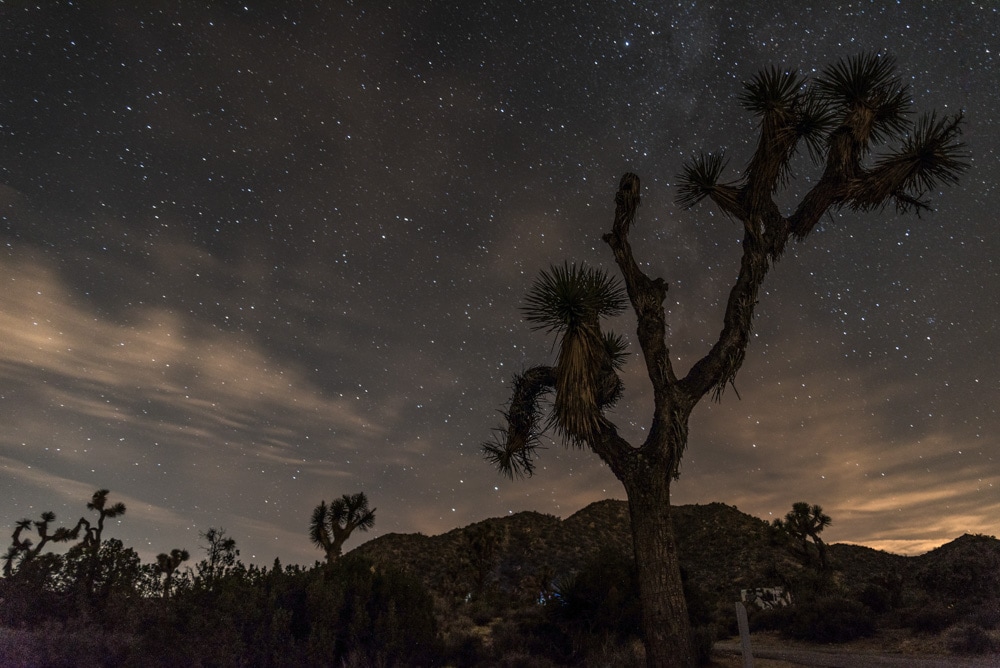
Where to Stay
The Full Moon is a vacation rental in Joshua Tree, one of the little towns in the north of the national park. The 2-bed, 2-bath home has a hot tub and a patio with garden views, and outdoor seating with a fire pit and desert views. It’s a short drive to the park entrance.
Book a stay here!
Suggested by us
7. Everglades National Park
Location: Florida
While you’ll find plenty of warm-weather national parks to visit in the US in January, one of the best is Everglades National Park in the Sunshine State. It’s one of the best places to visit in Florida!
This national park is popular year-round, but January marks the dry season in Florida, and the lack of mosquitoes and lower water levels throughout the swamps makes it especially enticing for visitors!
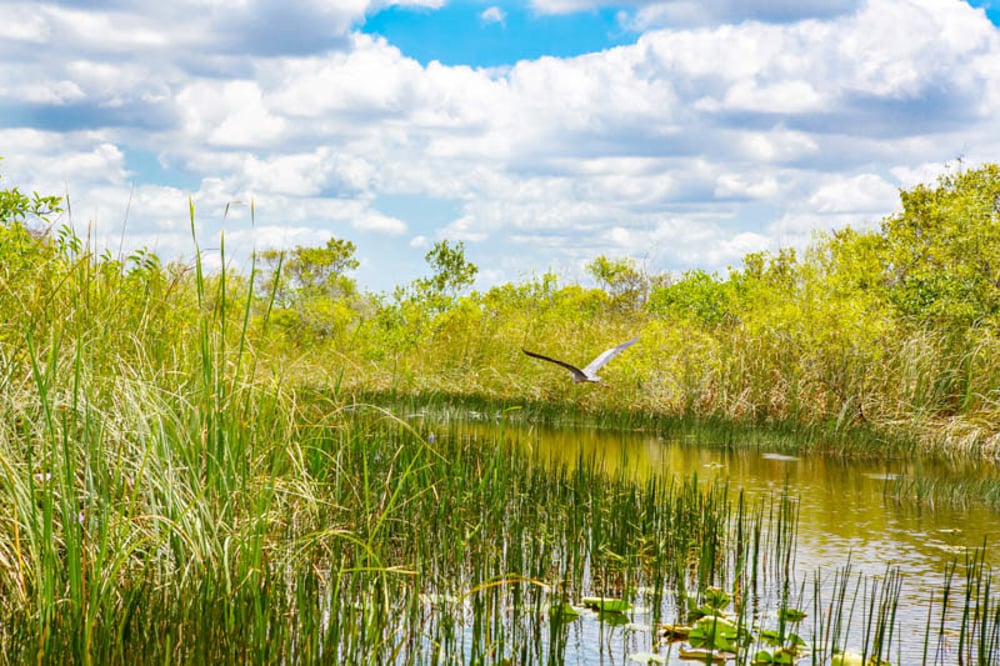
With a unique ecosystem not found anywhere else in the world, this 7,800-square-mile park is home to an abundance of wildlife and plant life.
Everglades weather in January: Daytime highs in Everglades National Park in January hover around 75 degrees Fahrenheit, which means the air is comfortable and not too hot or humid.
Rainfall is likely only on two days during January, as opposed to nearly 14 during July!
What to do in Everglades National Park: One of the best things to do in the park during the winter months is to go hiking!
There are many boardwalk trails throughout the park, like the Bobcat Boardwalk Trail, where you can walk through nature to go wildlife spotting. Look for a variety of birds!
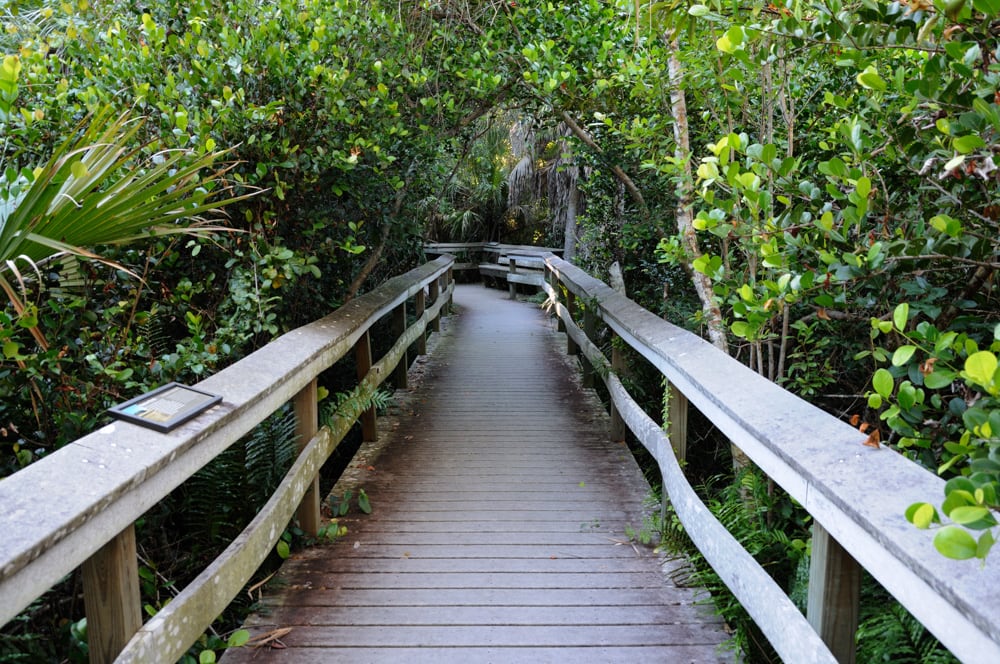
Another popular spot in the park is Shark Valley, a flat and easy trail that is the perfect location for bikes. The loop is a little over 15 miles, and you may see alligators and other wildlife and birds.
At the Ernest F. Coe Visitor Center, you can learn more about the ecosystem through the many wall displays and interactive media stations.
Unbeknownst to many, airboat tours are only allowed in certain parts of Everglades National Park, so it is best to book a tour with an authorized operator, or better yet, get on the water in a more sustainable way, such as in a canoe.
The Nine Mile Pond Canoe Trail is a fantastic place to go canoeing in the park! Look for alligators, turtles, water birds, and fish as you paddle.
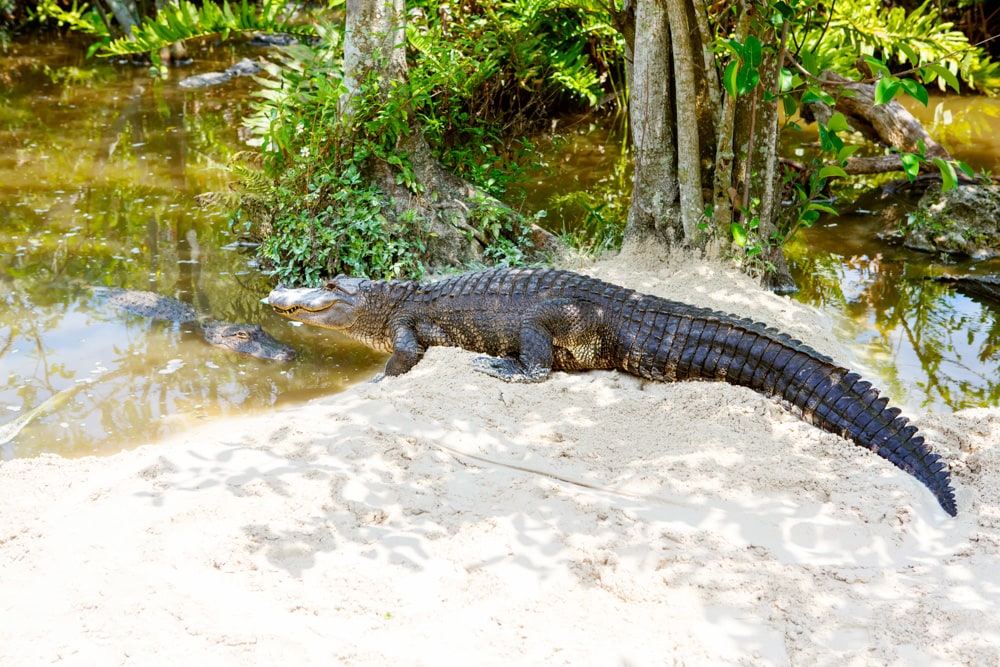
Good to know: Everglades National Park makes a wonderful nature-focused stop on a Florida Keys road trip.
In fact, on such a road trip, you can also visit Biscayne National Park, with its beautiful coral reefs and mangrove forests. It is just a short drive from the Everglades!
And if you are planning a visit later in the winter, Everglades National park also makes our list of the best national parks to visit in February!
Where to Stay
If you’re looking for hotels close to the highway to get to the Everglades, choose to stay in Homestead. The Courtyard by Marriott offers comfortable rooms and is about 20 minutes from the park.
Book a stay here!
If you want to visit the Everglades from a base in Miami, a fantastic place to stay in South Beach is the Esme Hotel. It has a rooftop pool and lounge and is surrounded by some of the best restaurants in the area!
Book a stay here!
Suggested by Megan of Megan & Aram
8. Zion National Park, Utah
Location: Southern Utah
Zion National Park is one of the top rated national parks in the United States and one of the most beautiful places to visit in Utah. Winter only adds to its glory!
With the stunning red cliffs of Zion Canyon and the scenic Virgin River, the park should be on every nature lover’s bucket list.
But as one of the most popular national parks in the USA, Zion tends to get congested between spring and fall.

However, on a January visit, you will find the trails free of crowds, and parking much easier. Plus, you can drive through the park in your own vehicle, instead of having to ride the shuttle.
Zion weather in January: January in Zion National Park generally sees a high of 50 degrees Fahrenheit and low of 25 degrees.
Rain or snow is possible a few times in the month. The snow doesn’t stay for very long, though. And a dusting of snow on the rocks creates magical landscapes in the park!
What to do in Zion National Park: There are so many fun things to put on your Zion National Park itinerary in January!
The scenic, simple Watchman Trail, adjacent to the campground and just past the visitor center, provides incredible views and just the right amount of challenge. Nothing quite beats snow-dusted red mountain tops.
At about 2 miles round trip, the Riverside Walk Trail is another easy hike in Zion that offers spectacular scenery. It is a great way to see some of the dramatic beauty of The Narrows without getting wet!
For an epic Zion experience, hike The Narrows! Wade through water as you make your way upstream on this incredibly scenic and unique journey.
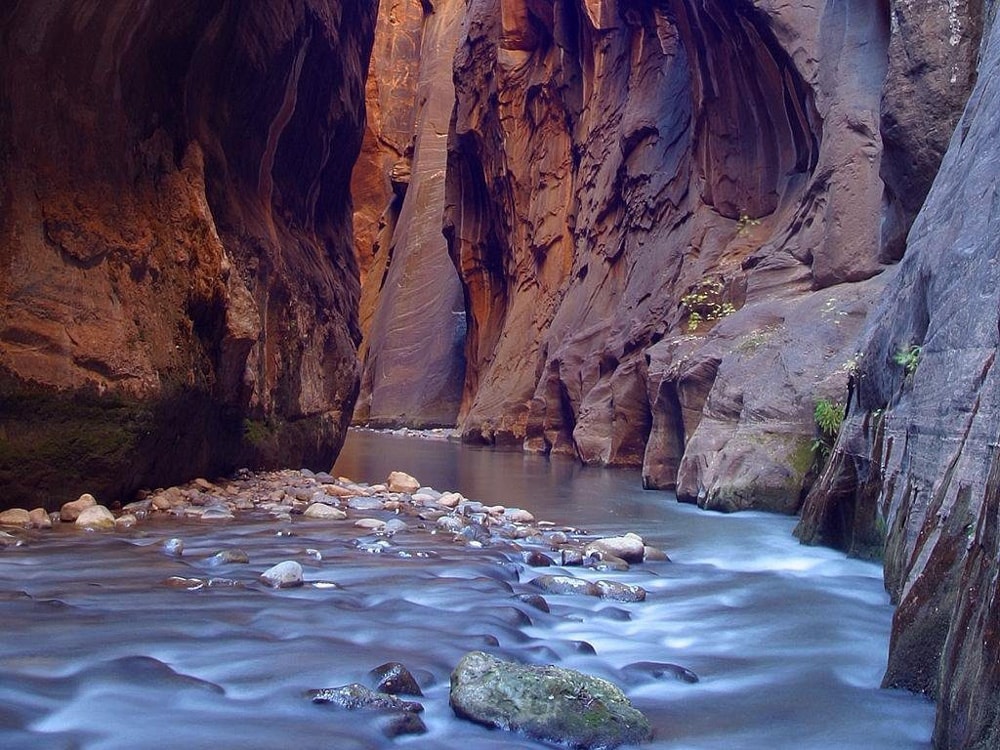
As water temperatures at this time of year can be close to freezing, be sure to get a neoprene wetsuit rental from one of the many shops in Springdale, and wear base layers underneath in order to stay safe. Check the National Park Service website prior to starting your hike, to confirm safety conditions.
If you’re worried a hiking trail may be closed due to snowfall, you can’t go wrong with the scenic drive through the park, alonh Highway 9.
Take in the informative displays at the Zion Visitor Center, stop at the Zion Human History Museum, and then enjoy the many viewpoints long the drive.
You’ll stay warm in your car as you take on Zion’s Scenic Byway for a grand total of 54 miles of pure beauty. This road is only open to personal vehicles during the off season, so it is your chance to truly enjoy the drive!
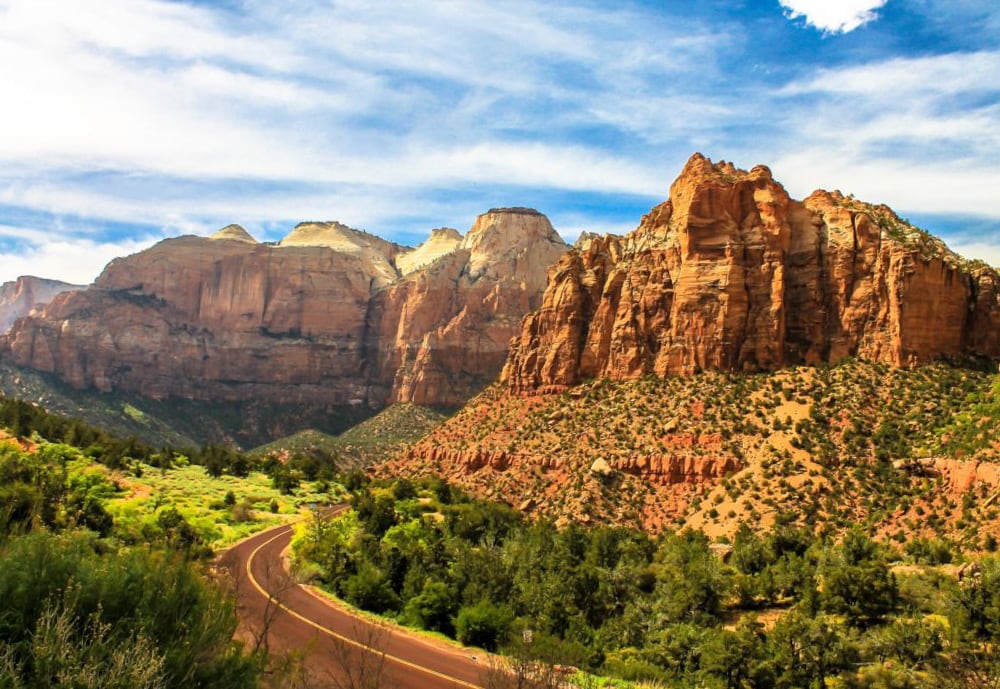
Where to Stay
Consider staying at Zion Ponderosa Ranch Resort in East Zion for a cozy budget experience. Rental homes offer full kitchens and free wifi.
Book a stay here!
Also in Springdale, La Quinta by Wyndham is located close to the park entrance. The hotel has a hot tub and rooms are comfortably furnished. Shopping and dining are close by.
Book a stay here!
Suggested by Alyssa of An Apple a Plane
9. Grand Canyon National Park
Location: Arizona
The Grand Canyon is one of the most visited natural landmarks on the planet. The national park includes the South Rim, the most popular part of the canyon, and the North Rim, the road to which closes in the winter.

Grand Canyon National park remains incredibly busy from spring through fall (and during the holidays), so January is a wonderful time to visit if you want to experience the magic of the Grand Canyon without the crowds.
The South Rim of the Grand Canyon remains open year-round, and roads are drivable in good weather.
Weather at the Grand Canyon in January: Daytime highs in Grand Canyon National Park in January tend to be generally in the 40s and low 50s, with nighttime lows dropping into the teens and low 20s.
Temperatures at the bottom of the canyon are more temperate in the winter, with January average highs of 58 degrees Fahrenheit.
Although winter storms and snow are always a possibility at the Grand Canyon in January, you’ll also get clear, sunny days, perfect for walking the rim. And the temples and buttes of the park look stunning with a dusting of snow on them!
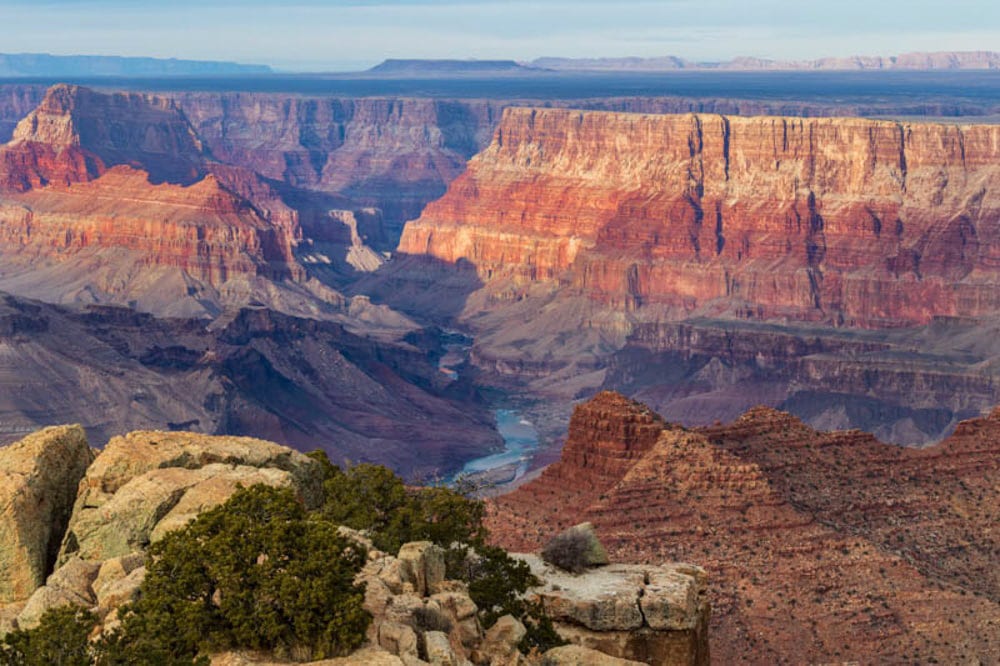
What to do in Grand Canyon National Park: Start at the South Rim Visitor Center, especially if it’s your first time. Rangers will be on hand to answer questions, and you can view the exhibits. Be sure to walk over to Mather Point nearby for your first look at the Grand Canyon!
Drive Hermit Road (it’s only open to private vehicles in the winter!) and stop at the various overlooks to see the canyon from different angles and snap a million photos. From the Trailview Overlook, you can see Bright Angel Trail zigzagging down the canyon.
Hopi Point and Mohave Point are perfect for taking in sunsets at the Grand Canyon. And at the end of the road, Hermits Rest is a striking structure that makes a great photo spot.
Also drive Desert View Drive, which has several canyon viewpoints as well as picnic areas if you want to have a meal with a view! Grandview Point offers panoramic views of the canyon, and at Moran Point you can see three main rock groups in the canyon.
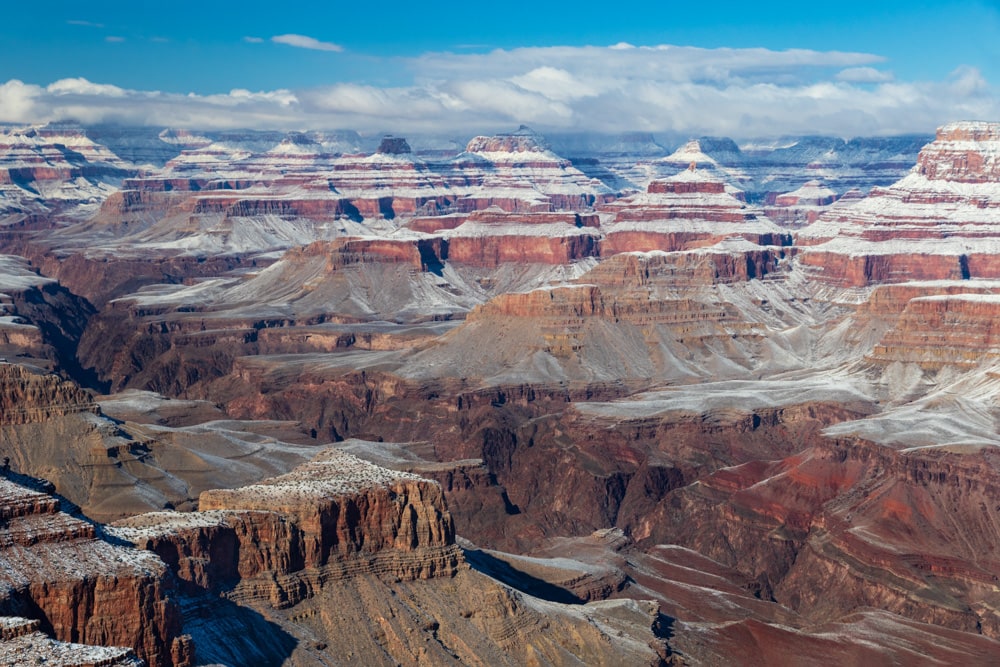
The drive ends at the Desert View Watchtower, where you can sip on a warm beverage at the Trading Post before heading back.
Trails may be icy, but if you’ve come prepared, you can do some hiking on sunny days! At the rim, the Trail of Time is a paved walk designed as a geologic timeline. Every meter you walk is equal to one million years of the Grand Canyon’s history!
The Rim Trail, of which the Trail of Time is a part, extends for 13 miles along the rim of the canyon and is mostly paved. For hikers that choose to go below the rim, Bright Angel Trail and South Kaibab Trail are the main corridors that go to the bottom.
Look for wildlife as you drive or walk! You may see mule deer and elk walking over the snow, or California condors or bald eagles in the sky.
Although many people visit the Grand Canyon on day trips from Vegas, it’s ideal to allow 2-3 days to experience the beauty of your surroundings.
Where to Stay
Stay inside the park at one of six lodges at the South Rim. The El Tovar Lodge is historic: it opened in 1905. It is hugely popular, but you may be able to score a room here for a January stay!
The Holiday Inn Express Grand Canyon is located in Tusayan, about 9 miles from the park. The property has an indoor swimming pool and a hot tub. Rooms are spacious and comfortably furnished.
Book a stay here!
Suggested by us
10. White Sands National Park
Location: Southern New Mexico
With their gentle curves and pristine white surfaces, the gypsum sand dunes at White Sands National Park have a surreal beauty. Like glaciers, they are constantly changing, molded by the wind into ever-shifting shapes.
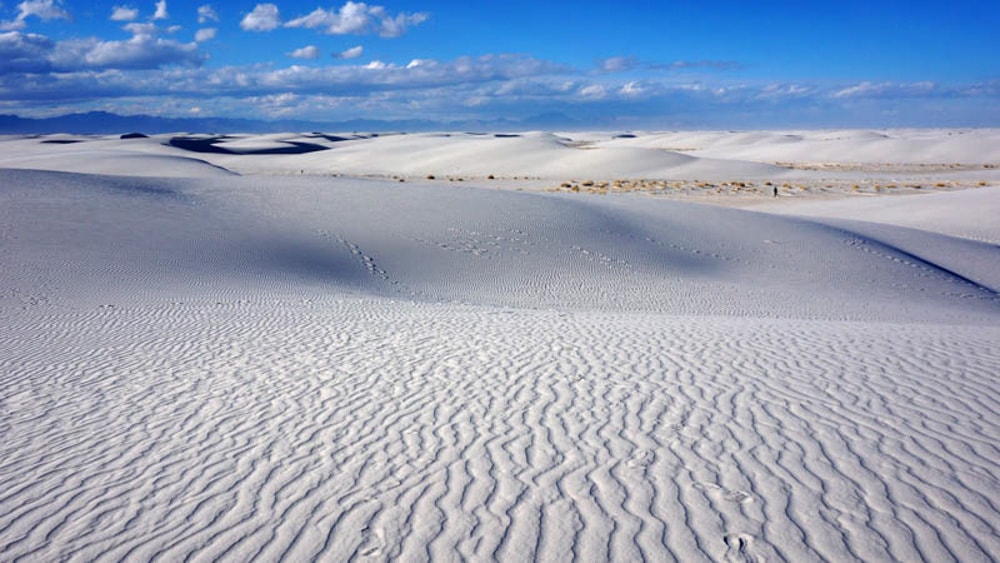
January is an ideal time to visit White Sands, since it is beautifully sunny and comfortable weather for hiking.
The crowds are usually smaller during this time of year, so you’ll be able to enjoy the tranquil natural landscapes that surround you!
Weather in White Sands in January: Daytime temperatures range from 50-60 degrees Fahrenheit. Nights can be below freezing.
January is a largely dry month at White Sands National Park, so expect sunshine for the most part.
Snow isn’t unheard of in the winter, but it typically melts by the time any visitors arrive at the park, due to the sunny warmer days.
What to do in White Sands National Park: Hiking is the most popular activity in the park.
The Interdune Boardwalk at White Sands is a great option for exploring the park’s unique landscape as it winds through the dunes, providing visitors with amazing views of the sandscape. It is fully accessible for people using wheelchairs and strollers.
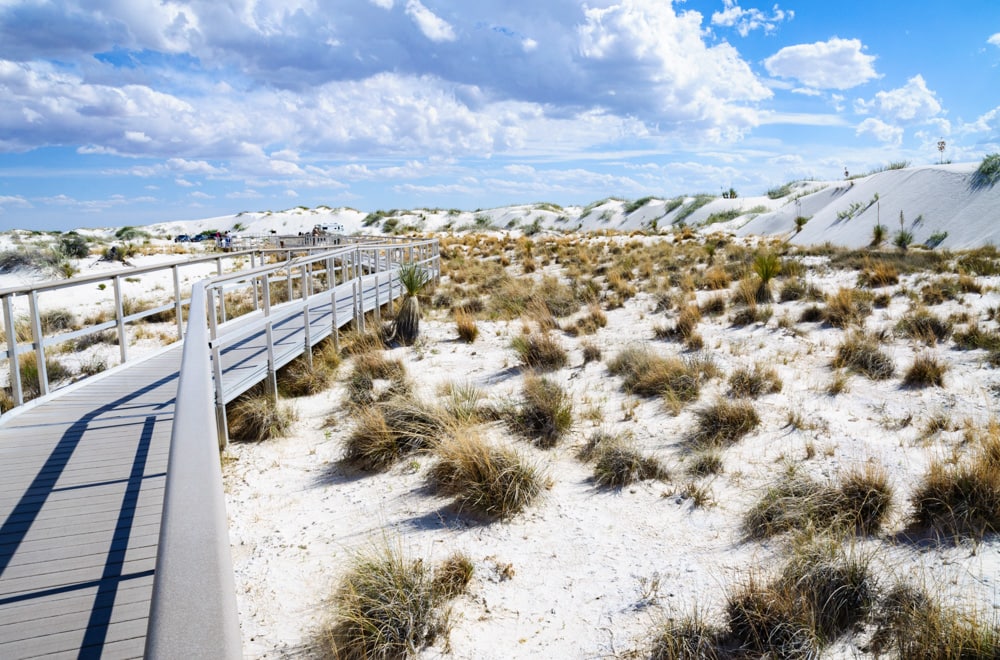
The Dune Life Nature Trail is where visitors can hike and learn about the park’s ecology. The trail leads through a dune field and visitors can read interpretive signs about the plants and animals that live here.
Other trails include the Alkali Flat Trail (5 miles and strenuous), Playa, and the Backcountry Camping Trail.
Bring your mountain bike for a truly unique bicycling experience. There is nowhere else on this planet you can have this kind of adventure on a bike! Dunes Drive is a 16-mile loop for cycling and off-roading is prohibited.
Sledding at White Sands is a popular family activity, because the soft dunes make form the perfect sledding hill! Bring your sleds or buy some at the visitor center. Give your sleds a fresh coat of wax for maximum fun!
Dunes Drive is an eight-mile scenic drive through the park that begins at the visitor center and ventures deep into the gypsum dunes. You can stop to take photos, walk on the white sand, or have a meal at one of the picnic areas.
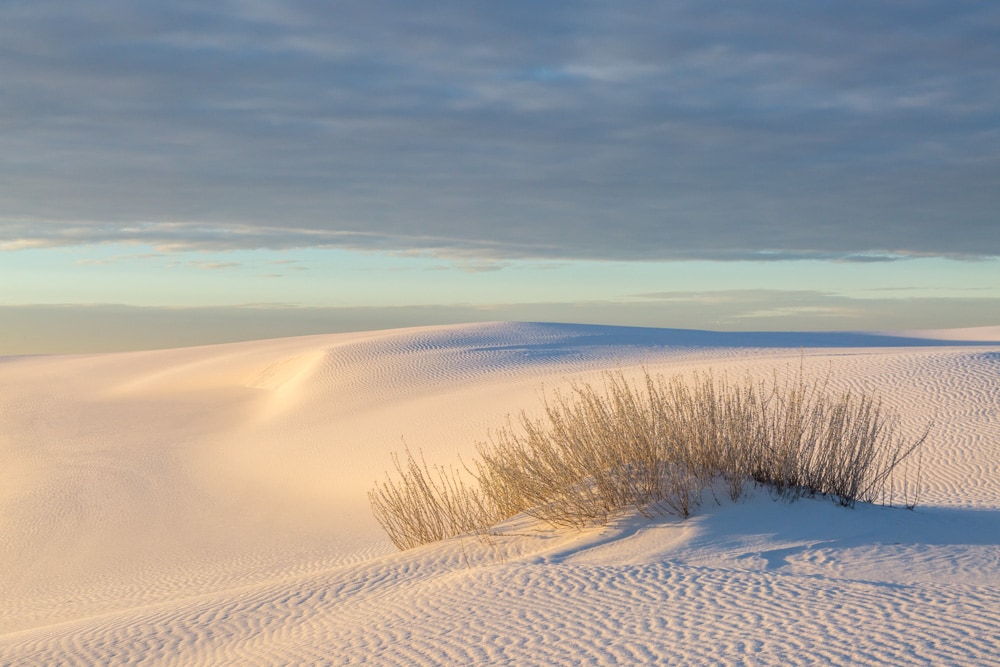
Where to Stay
There are only a few lodging options in Alamogordo, NM, which is the closest town to White Sands. The Hampton Inn is recommended and is located 15 miles from the park.
Book a stay here!
Suggested by Heather of This Noshtalgic Life
11. Saguaro National Park
Location: Southern Arizona
If you’re looking to visit a beautiful national park to escape winter, look no further than Saguaro National Park in southern Arizona. The park is one of the best places to visit in Arizona.
Located right outside of Tucson, the park is known for its massive groves of saguaro cacti and rugged mountains covered in sharp desert vegetation. The saguaro grows all over southern Arizona, but the national park holds the most spectacular collection.
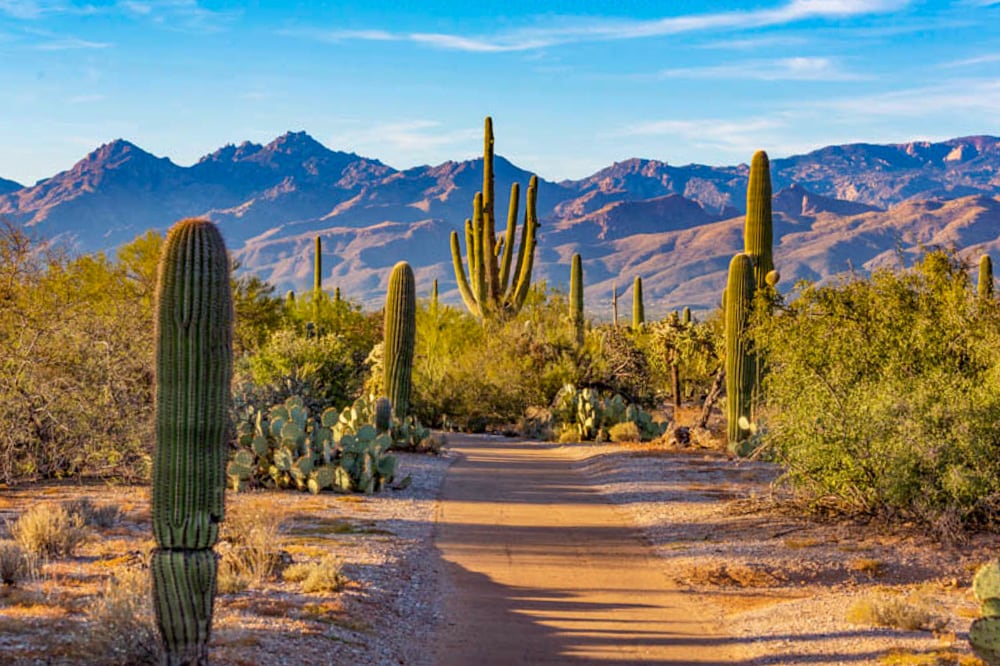
Winter is the perfect time to visit the park, since in the summer, daytime highs are well over 100 degrees and the heat can be seriously dangerous and even life-threatening.
The pleasant winter weather also makes driving the scenic park roads a more enjoyable experience.
Weather in Saguaro in January: The average daytime high in January is about 66 degrees Fahrenheit, with overnight lows around 40 degrees.
Winters at Saguaro National Park are mostly dry.
What to do in Saguaro National Park: The number one thing to do in Saguaro National Park is to hike. The park is split into two separate sections separated by the city of Tucson, and you’ll find great trails in both districts.
One strenuous hike great for the winter is the Wasson Peak hike on the west side of the park. The eight-mile round trip hike offers fantastic views of the park.
Easy but fun walks in the west district include the 0.5-mile Desert Discovery Nature Trail, and the 0.8-mile round trip Valley View Overlook Trail. Get up close to the saguaro and other park flora on these trails!
The Signal Hill Petroglyphs Trail is another short must-do. Along the route to the viewpoint and at the top of the trail, stop to view the centuries-old rock art created by the Hohokam.
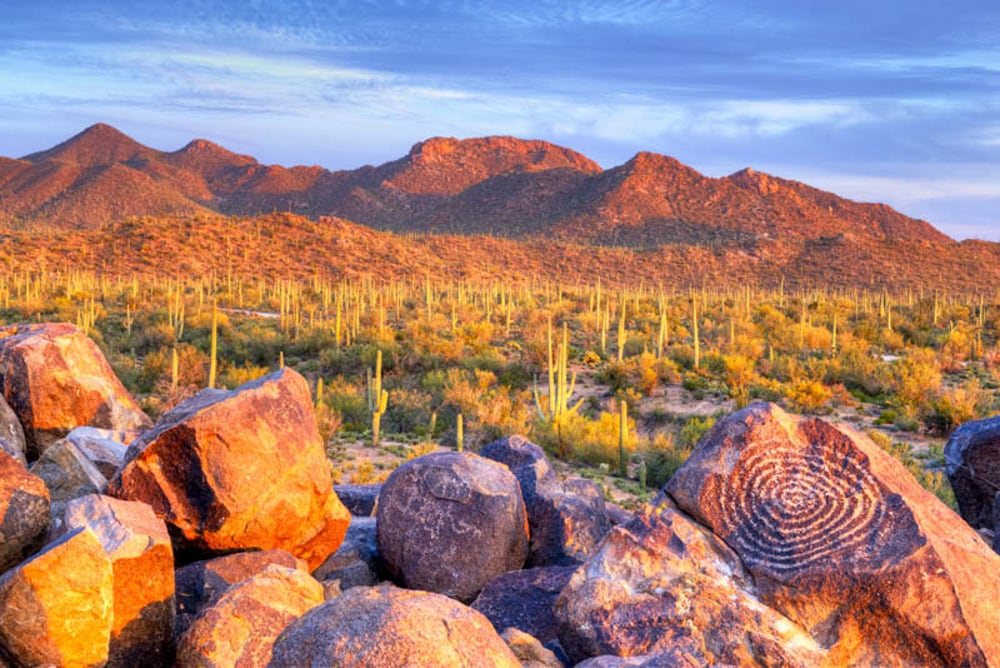
If you want it to feel a bit more like winter, you can hike up to the higher elevations on the east side of the park on the trail to Mica Peak, which sits over 8,000 feet high and will probably be covered in snow.
There are scenic drives on both sides of the park: the Bajada Loop in the west, and the Cactus Forest Drive in the east. Both drives offer viewpoints and overlooks, if you want to stop to take photos.
Catching a desert sunset is another must-do in the park. The low winter sun makes for spectacular sunsets across the cactus-clad valleys.
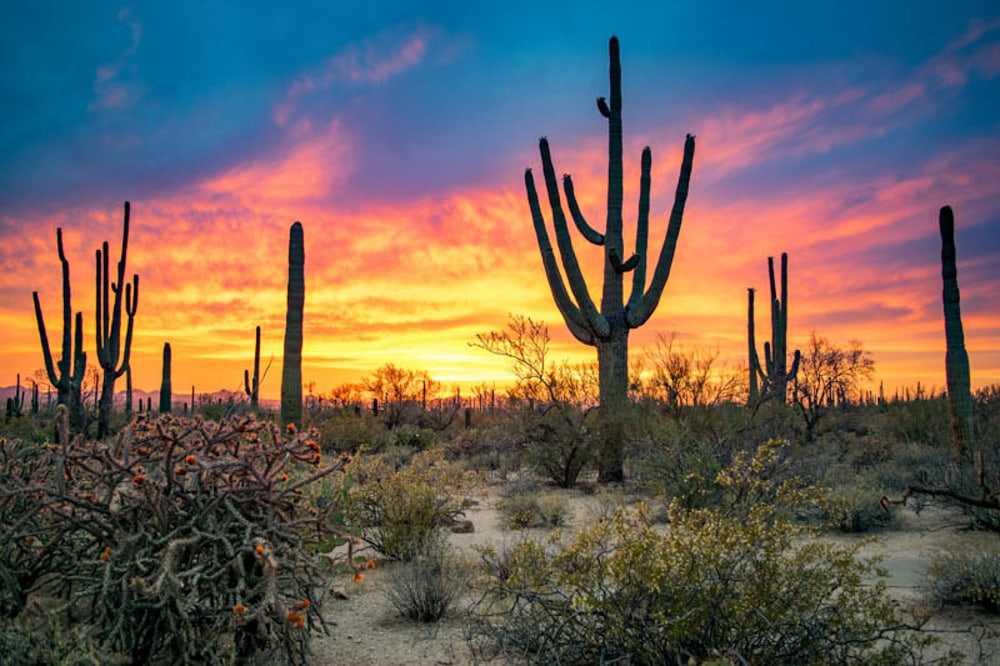
Where to Stay
With the city of Tucson being so close, there are numerous lodging options for your visit. Consider Graduate Tucson, located just over a 20-minute drive from either side of the park. The cool boutique hotel has a rooftop pool.
Book a stay here!
There are no developed campgrounds in the park, but if you want to camp, Gilbert Ray Campground in nearby Tucson Mountain Park is your best option. There’s nothing like a desert sunrise from a beautiful campsite in the mountains!
Suggested by Chris of Around the World with Me
12. Big Bend National Park
Location: Western Texas
January is an excellent time of year to visit Big Bend National Park. Once the holidays have passed, the park is far less crowded, and the weather is generally pleasant and mild during the day.
Named after a stretch of the Rio Grande, Big Bend offers spectacular landscapes and a surprising diversity of flora and fauna. The park is also famous for fossils from several thousand years ago.
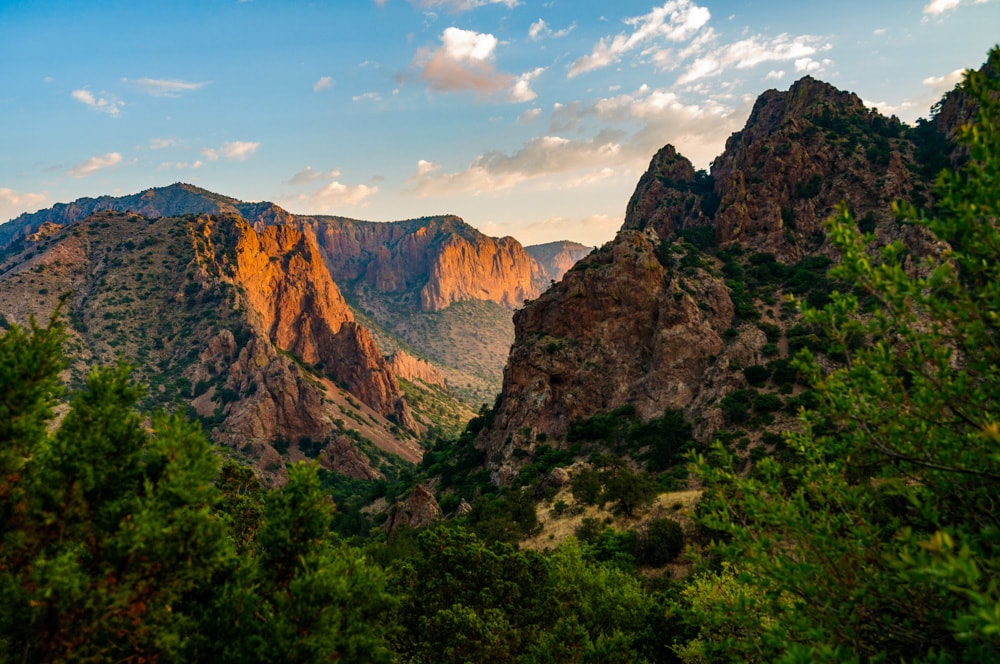
Three to four days is the perfect amount of time to explore the best of what Big Bend has to offer.
Weather in Big Bend in January: Day time temperatures in January in Big Bend National Park reach the low 70s most days. After the sun goes down, however, the lows can dip to freezing, so be sure to pack warm layers and be prepared.
You’ll generally find it dry in the park in January. Snowfall is rare, but when it does happen, usually at the higher elevations, the rock faces look even more beautiful!
What to do in Big Bend National Park: Big Bend is one of the largest national parks in the United States and boasts over 150 miles of hiking trails.
There are trails of varying distances and for all ability levels. You can explore the Chihuahuan Desert, or the Chisos Mountains, or the banks of the Rio Grande River on day hikes.
Some of the most popular day hikes include the moderate Window Trail, the Lost Mine Trail, the super scenic Santa Elena Canyon Trail, and the strenuous Emory Peak Trail.
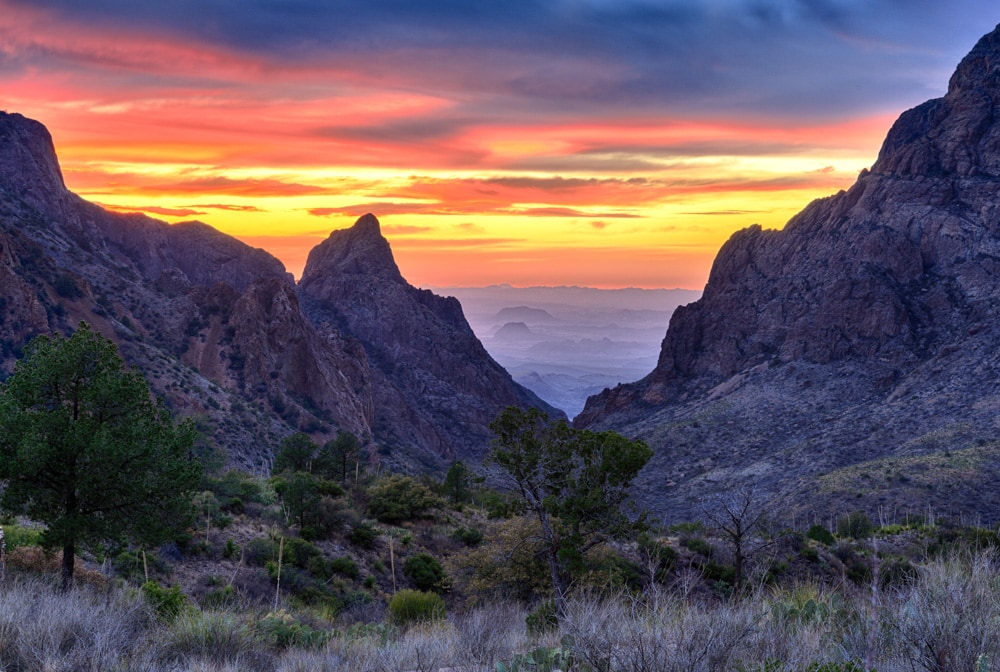
If you’d rather soak in the scenery from the comfort of your car, Big Bend boasts more than 100 miles of paved roads. Snap photos of the views, look for birds and wildlife, and discover the history of the park.
If you arrived in a 4WD, there are dirt roads to explore in the park as well.
Soak in a hot spring! There’s nothing better than warming up on a cool winter day with a long soak in a hot spring.
Big Bend’s natural hot spring is located in the foundation of an old bath house. Historically used as a health spa in the early 20th century, the bath house foundation makes for a great natural hot tub with views of the Rio Grande.
Adventurous visitors can float the Rio Grande through miles of stunning deep canyons on an exciting guided tour. All equipment is provided. Bring lunch and water and enjoy a fun day on the river!
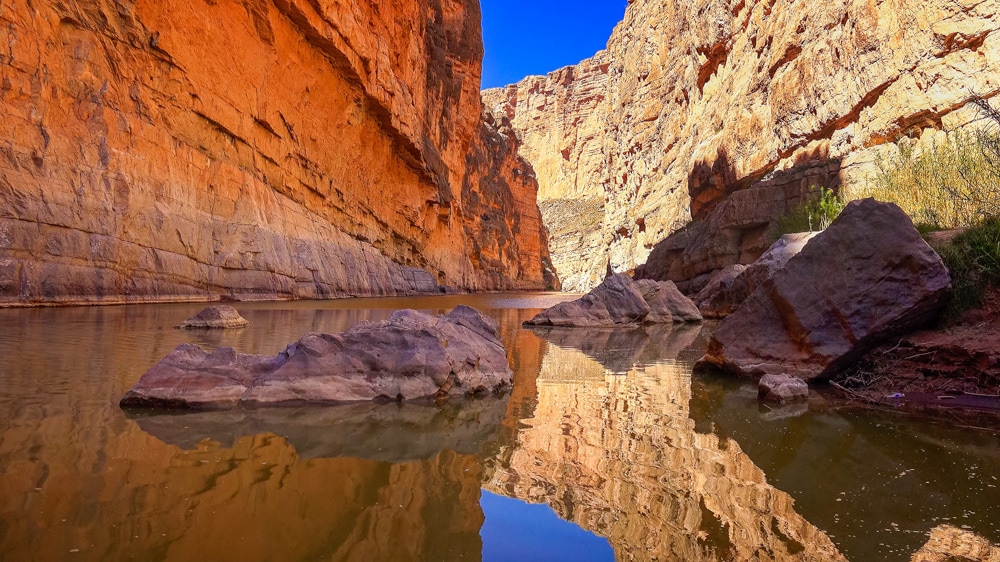
Where to Stay
Chisos Mountains Lodge is the only lodging inside the park. Rooms are basic, but the park is right out the door. Book early!
Just to the west of the park, the small town of Terlingua makes a good base from which to explore. The Lajitas Golf Resort offers spacious and well-appointed rooms, along with gourmet onsite dining, pool, and full-service spa.
Book a stay here!
Suggested by Jackie of Bon Voyage Jackie
13. Dry Tortugas National Park
Location: Southern Florida
Easily one of the best US national parks to visit in January, Dry Tortugas National Park covers a 100-square-mile area that is 70 miles west of Key West, Florida.
The park is mainly water, and only accessible via boat or seaplane. It includes seven distinct islands that you’ll love exploring after snorkeling through the beautiful coral reefs here.
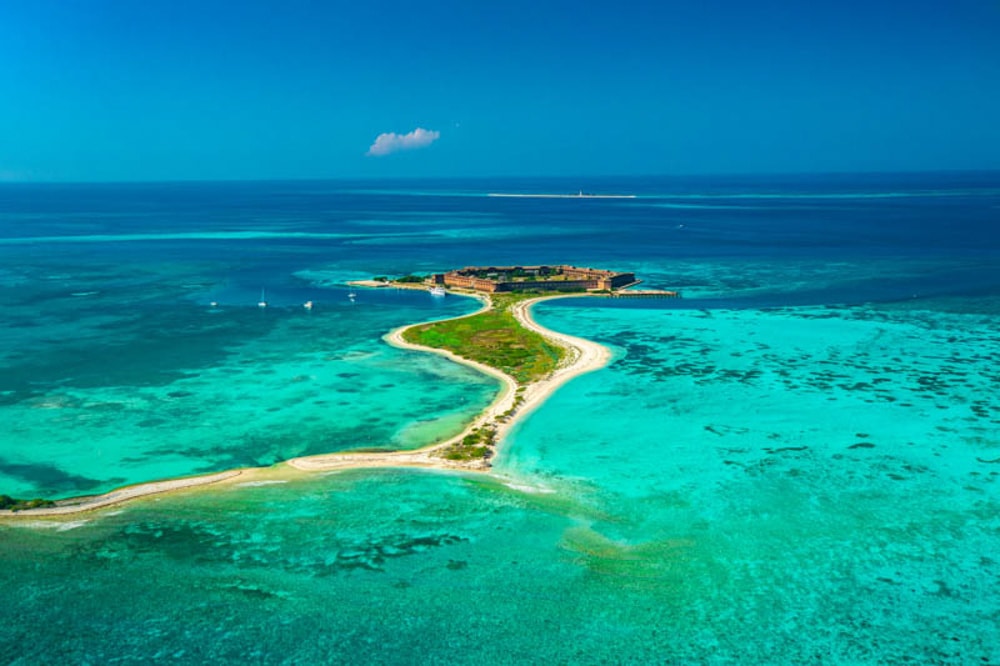
Dry Tortugas is both unique and beautiful, yet it’s one of the lesser-visited US national parks because of its remoteness. Add it to your itinerary if you are visiting southern Florida!
Weather in Dry Tortugas in January: The weather in January at Dry Tortugas National Park is quite comfortable, since daily highs are around 75 degrees Fahrenheit, while daily lows are around 65 degrees.
The region also only has around five days of rain per month.
What to do in Dry Tortugas National Park: Explore Fort Jefferson, a local edifice located on Garden Key, the second largest island in the park. The fort dates all the way back to the 19th century.
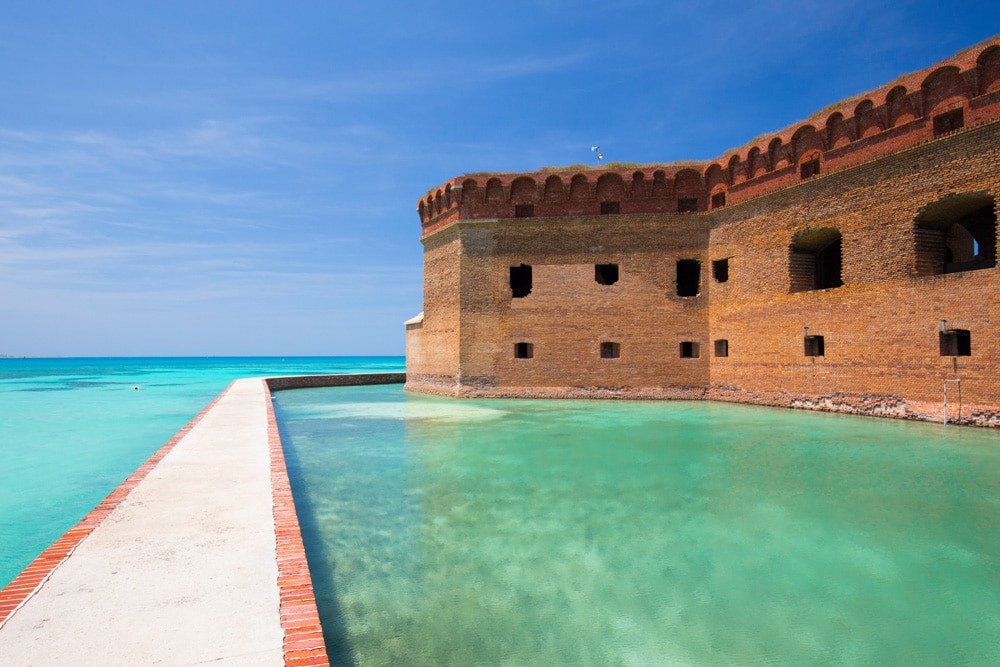
You can also snorkel (or scuba dive) around Moat Wall and near the south coaling dock ruins at Garden Key before admiring the views of Fort Jefferson from South Swim Beach.
The several species of coral reefs here are home to a variety of colorful marine life, from fish to sea stars, anemones, and lobsters. Not only is the marine life abundant, it is also larger. The waters are very clear, making underwater exploration a joy.
North, South, and East Beaches on Garden Key are great places to go swimming, since there are minimal waves, and the water is crystal clear. You can also sunbathe, or stroll the beaches.
To visit, take the Yankee Freedom III ferry from Key West to Dry Tortugas. The trip takes around 2.5 hours each way, and costs about $200 per adult. Breakfast and lunch are included with the cost of your tickets.
A more expensive but thrilling option for getting to the park is the seaplane from Key West to Dry Tortugas. Half and full day excursions are available, and the flight time is 40 minutes each way.
Where to Stay
After spending an exciting day in Dry Tortugas National Park, spend the night at the Oceans Edge Resort & Marina Key West, located on the waterfront and close to dining and shopping.
Book a stay here!
Suggested by Victoria of Florida Trippers
14. Yellowstone National Park
Location: Idaho, Montana, and Wyoming
If freezing cold temperatures don’t deter you, consider a January visit to iconic Yellowstone National Park!
The steaming geyser basins in Yellowstone, surrounded by snowy landscapes, are nothing short of spectacular. And you’ll find the park significantly less crowded in the winter than in other seasons.
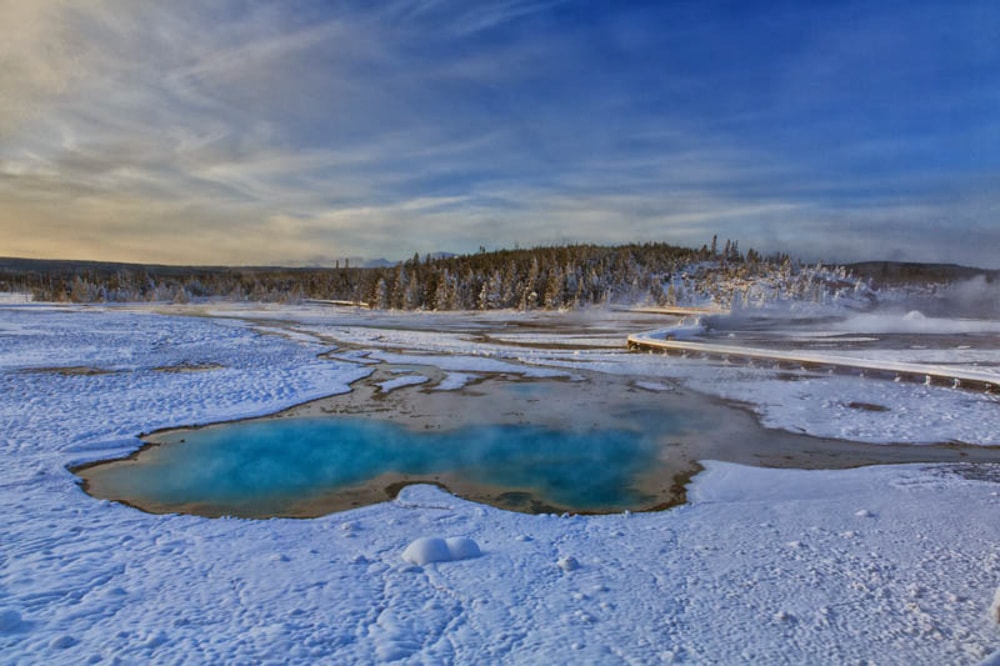
Other than the road between Mammoth Hot Springs and the northeast entrance to the park, roads are closed to automobile traffic in the winter, and you’ll travel by snowmobile or snowcoach!
Weather in Yellowstone in January: Average daytime highs in Yellowstone National Park in January tend to be around 25 degrees Fahrenheit, with nighttime lows dropping to 1-3 degrees Fahrenheit.
January in the park is very snowy, with about 35 inches of snow on average. A winter wonderland, indeed!
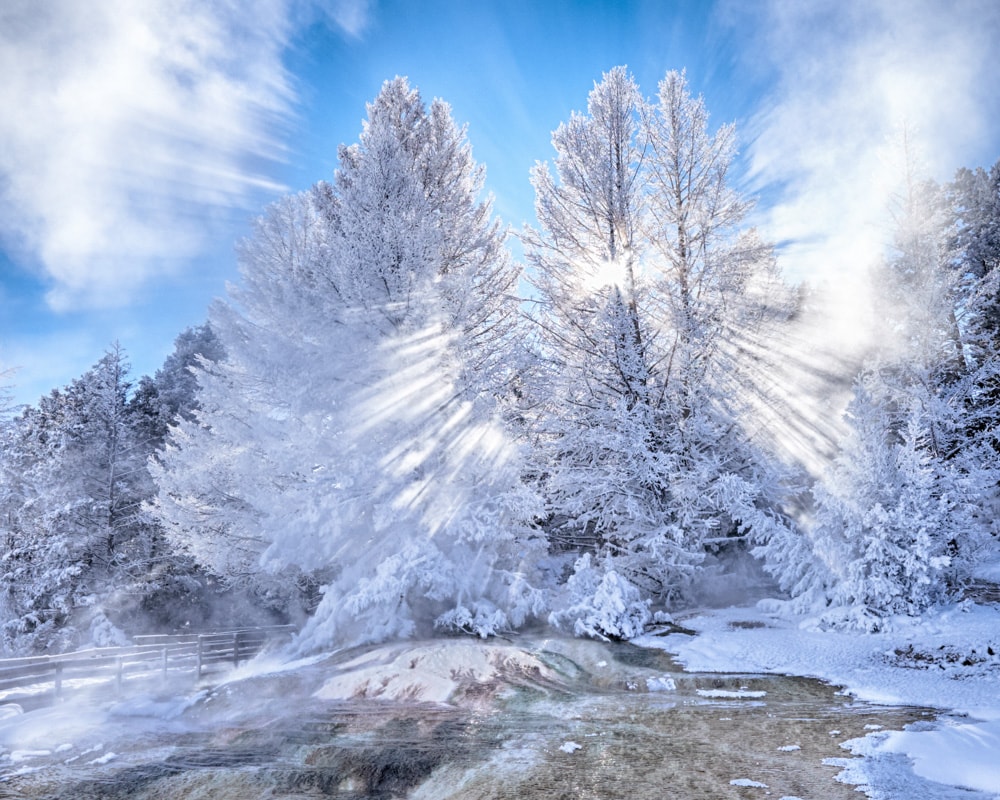
What to do in Yellowstone National Park in January: Explore the wintry landscapes in the park by snowmobile or snowcoach! You can visit Old Faithful or the Grand Canyon of the Yellowstone on standard guided snowmobile or snowcoach tours.
The Old Faithful Geyser Basin is one of the densest areas of geothermal activity on the planet, and on a guided snowcoach or snowmobile tour, you will see not only Old Faithful, but other features such as Fountain Paint Pot and Firehole Falls.
At twenty miles long, the Grand Canyon of the Yellowstone is a majestic sight. On a guided tour of the Grand Canyon of the Yellowstone, you will see the Lower and Upper Falls, Gibbon Falls, and Beryl Spring, among other sights.
You can also bring your own snowmobile or rent one at a local outfitter if you want to ride independently. And you can also splurge and design a custom snowcoach tour!
Other than taking in the sights, keep your eyes peeled for wildlife: bison, of course, but also elk, mule deer, moose, bobcats, coyotes, foxes, wolves, trumpeter swans, and more. In the winter, the snow makes it easier to spot animals.
Lamar Valley is a great place for wildlife viewing, since the cold drives animals down into the valley to look for food, and you may also see bison huddled in the area around Old Faithful, or near the Madison River.
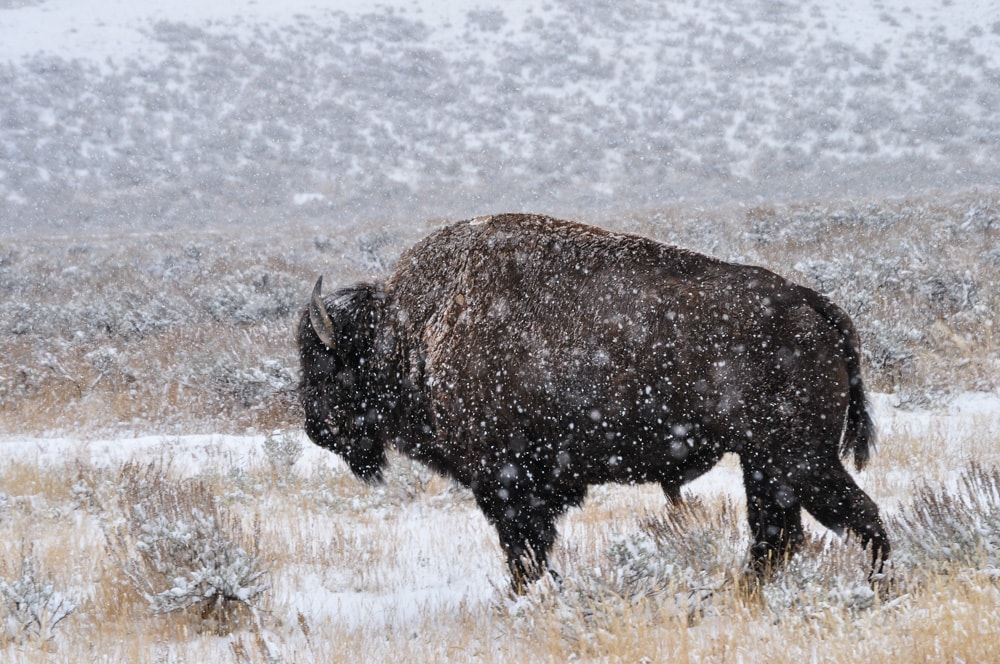
Snowshoeing and cross-country skiing are active ways to explore Yellowstone National Park in the winter. You can rent equipment from local outfitters and hit the trails!
The Old Faithful area is a great place to go cross-country skiing. You’ll find groomed trails that go around the Upper Geyser Basin area, providing access to many geothermal features and points of interest.
Good to know: If you are planning a longer visit, consider adding Grand Teton National Park to your trip! You’ll find breathtaking winter landscapes here as well, and opportunities to see wildlife.
Where to Stay
In the park, stay at the Old Faithful Snow Lodge: it stays open through the winter and is just a 10-minute walk from the famous geyser. In January, you’ll have to arrive by snowcoach or snowmobile!
In West Yellowstone, stay at the Explorer Cabins at Yellowstone, near the park entrance. The spacious contemporary cottages are bright and airy, with fireplaces and seating areas. Shopping and dining are close by.
Book a stay here!
Suggested by us
15. Rocky Mountain National Park
Location: Colorado
The iconic landscapes of Rocky Mountain National Park look as spectacular in the winter as they do in the summer.
No matter the time of year, Rocky Mountain National Park is one of the most epic places to visit in Colorado!
The stillness of winter, the snow-covered mountains, icy streams, frozen lakes, and icicles dangling from the branches of evergreens combine to create unforgettable sensory experiences.
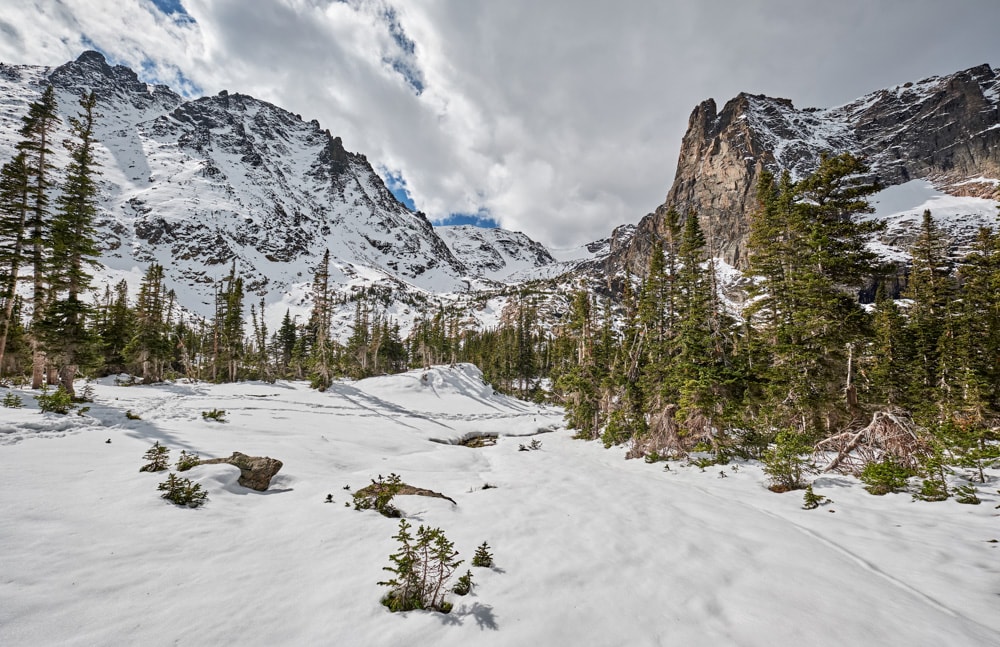
Although Trail Ridge Road (and some other park roads) are fully or partially closed in the winter, and trails can be icy, you’ll still find many fun things to do in Rocky Mountain National Park in January.
Weather in Rocky Mountain in January: Average daytime highs in Rocky Mountain National Park in January tend to be around 30 degrees Fahrenheit, so it’s literally freezing cold! Nighttime lows drop to around 10 degrees Fahrenheit.
Blizzards or snowstorms are likely, sometimes without much warning. The wind can kick up as well. But you may also see blue skies and sunny days.
What to do in Rocky Mountain National Park in January: Some scenic roads in the park are open, and you can drive them in good weather to admire the stunning views. In some years, you can drive Trail Ridge Road from the park entrance up to Many Parks Curve.
Bear Lake Road is a 10.5-mile drive that starts at the Beaver Meadows Visitor Center and ends at beautiful Bear Lake. Along the way, there are picnic areas and you can stop for photos as well.
Snowshoeing is the way to explore the park up close in the winter. Dream Lake and Emerald Lake are shorter snowshoe hikes that offer incredible views, and if you are up for a challenge, the Chasm Lake Snowshoe Trail awaits!
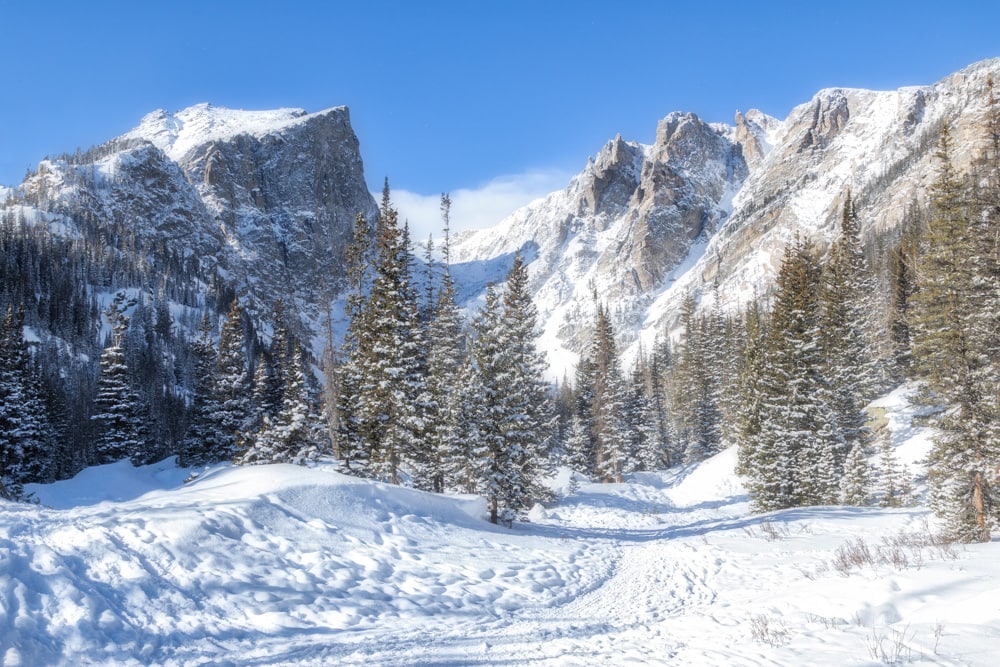
The Lily Ridge Loop Trail is an easy snowshoe hike, perfect for families. The 1.2-mile hike offers a fantastic view of the Diamond on Longs Peak. The trail overlooks Lily Lake.
Cross-country skiing is another popular winter activity in Rocky Mountain National Park. Trail Ridge Road, from the point where it’s closed to vehicular traffic, makes a great cross-country skiing trail, with views.
Look for wildlife in Rocky Mountain National Park as you drive or hike: you may see elk, moose, mule deer, bighorn sheep, and a variety of birds. Remember to bring your binoculars and a small camera with a zoom lens!
Where to Stay
Stay at Murphy’s Resort in Estes Park, about a 10-minute drive from the park entrance. The hotel offers a hot tub, and shopping and dining are close by. Rooms are spacious and comfortably furnished.
Book a stay here!
Suggested by us
More Inspiration for US National Parks Travel
Planning more visits to US national parks? Check out our round-up of the most exciting national parks in the west or plan a national parks road trip from Las Vegas: you’ll find more than a dozen national parks near Vegas for your bucket list.
If you want national park choices by season, we have an extensive round-up of national parks to visit in the summer, plus national parks to visit in the fall, and US national parks that are perfect for winter visits.
Visiting a US national park in another month? Check out our other round-ups of the best national parks to visit by month!
- Best National Parks to Visit in February
- Best National Parks to Visit in March
- Best National Parks to Visit in April
- Best National Parks to Visit in May
- Best National Parks to Visit in June
- Best National Parks to Visit in September
- Best National Parks to Visit in October
And if you haven’t bought your National Parks Pass yet, get it now!
Buy online at REI.
Did you find this article informative? Pin it for later reference!
